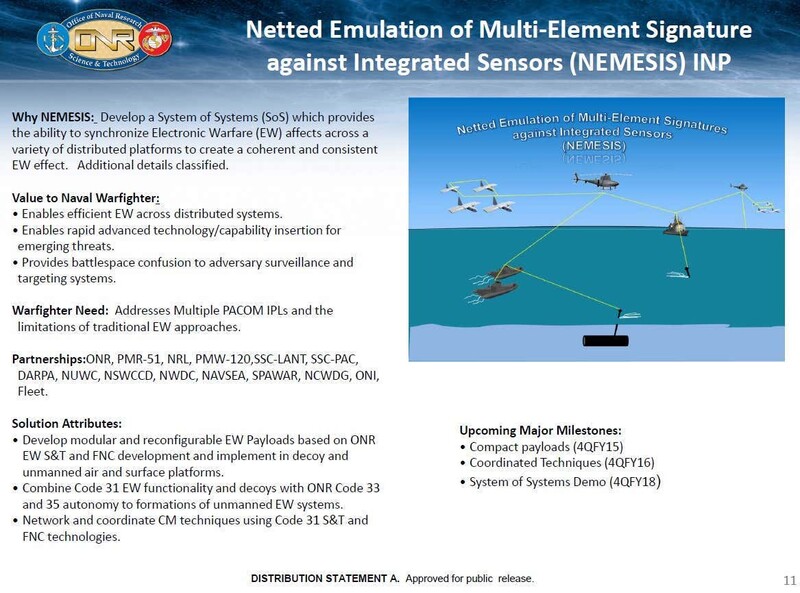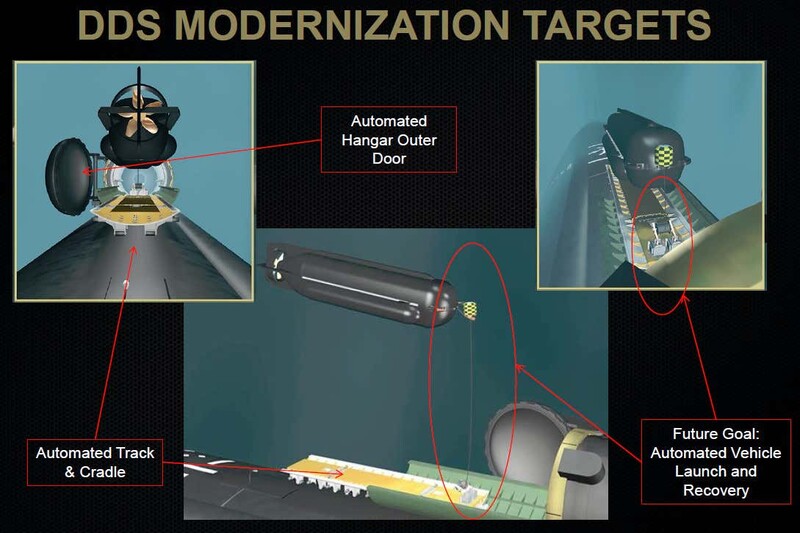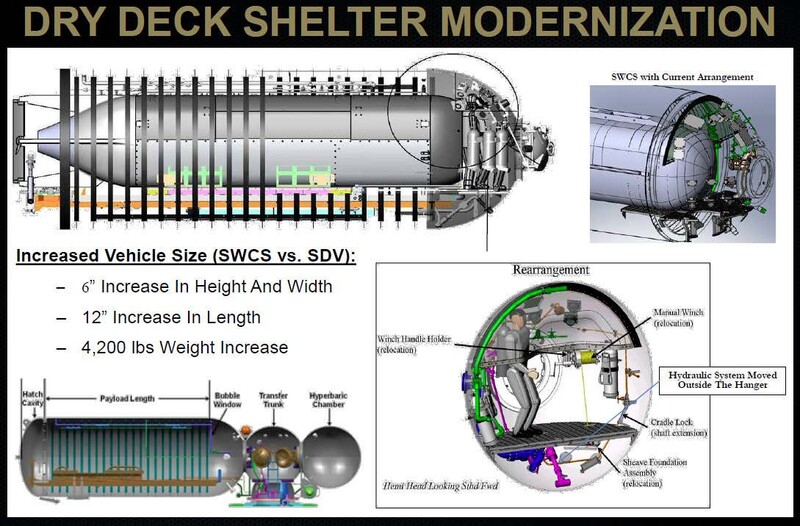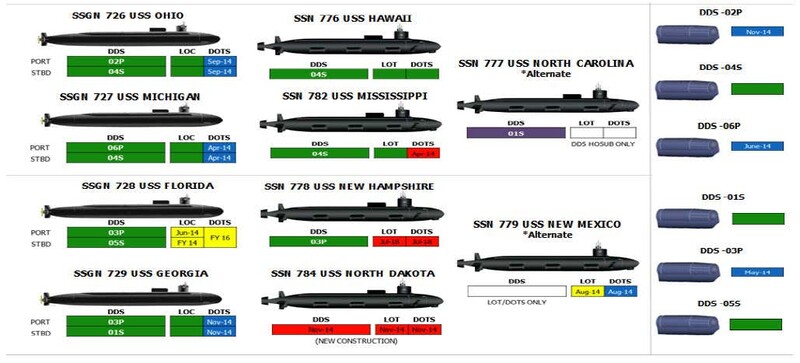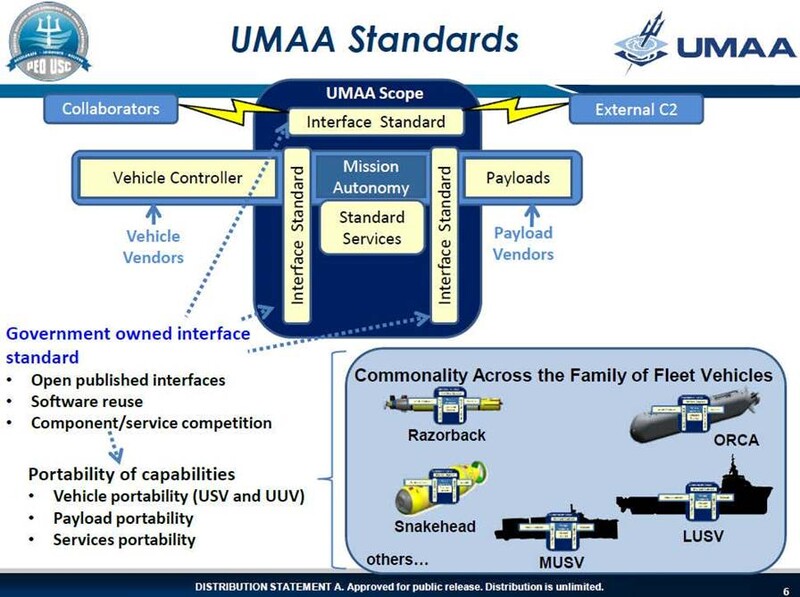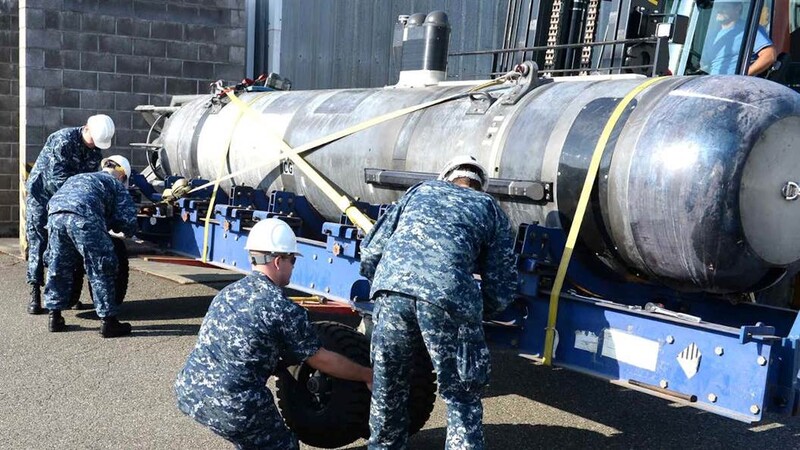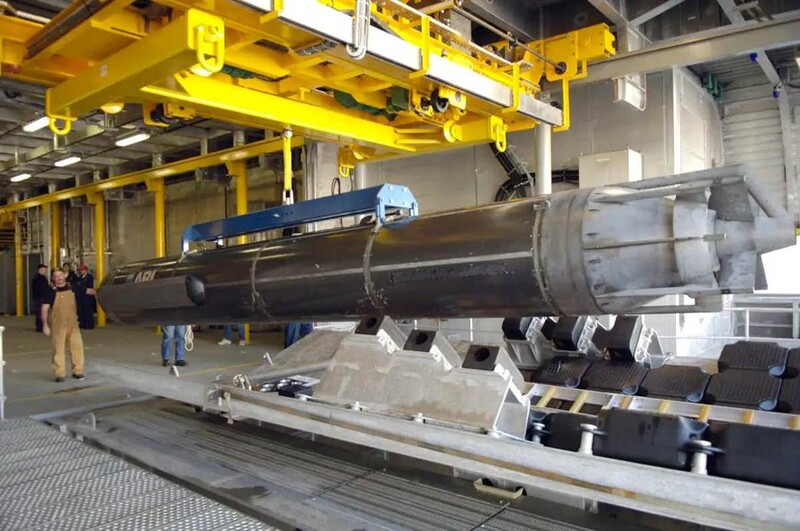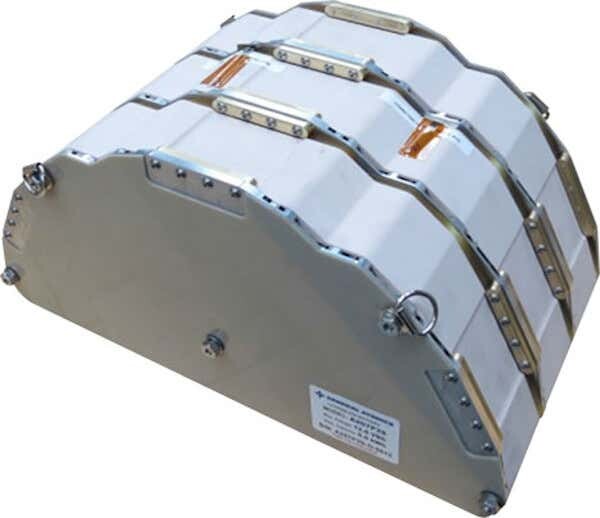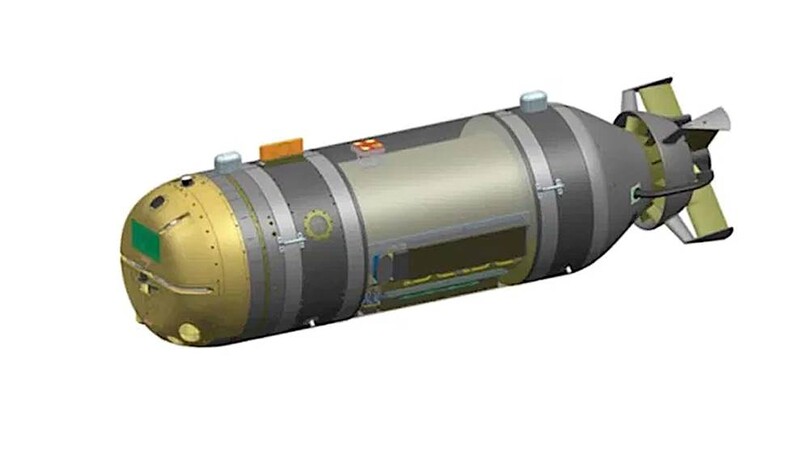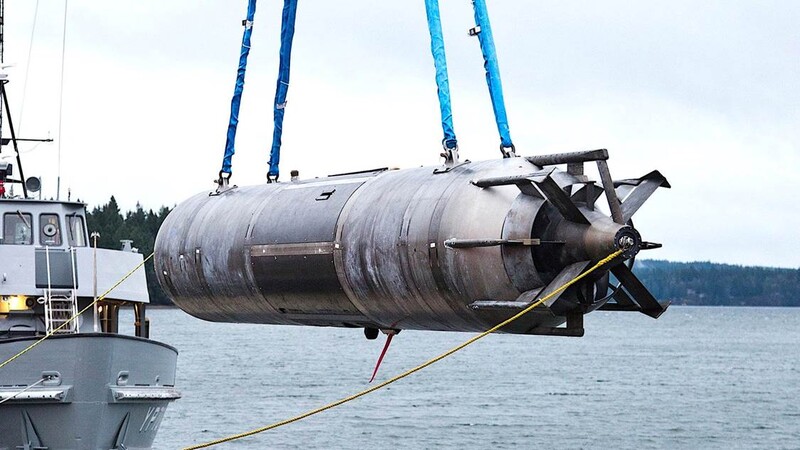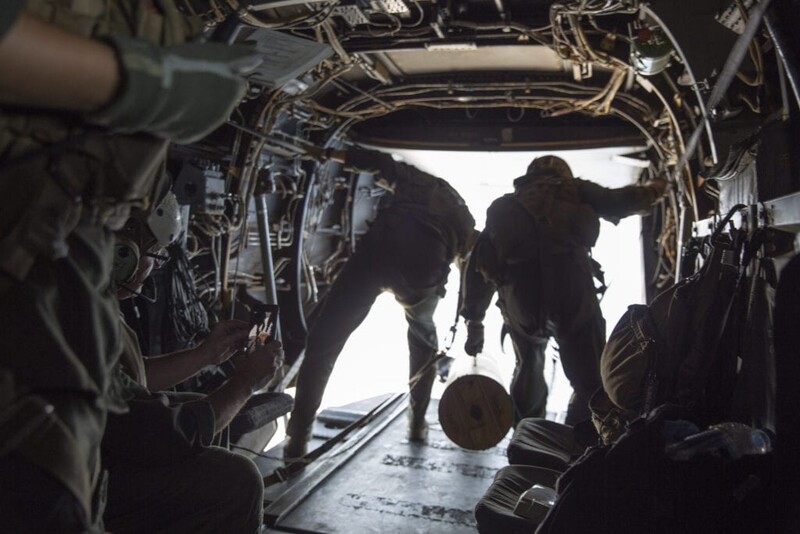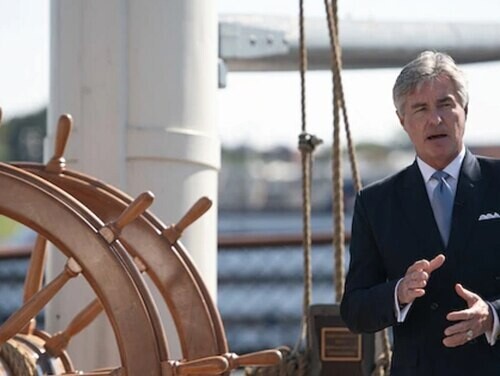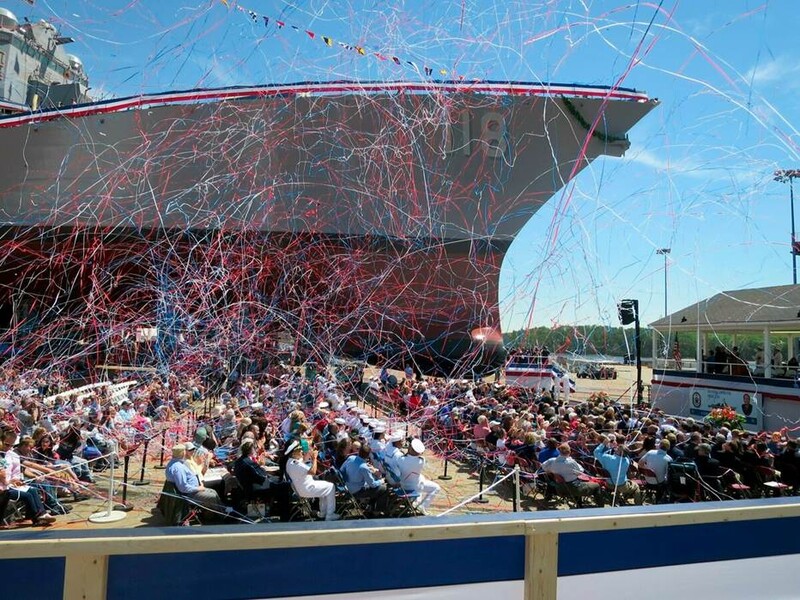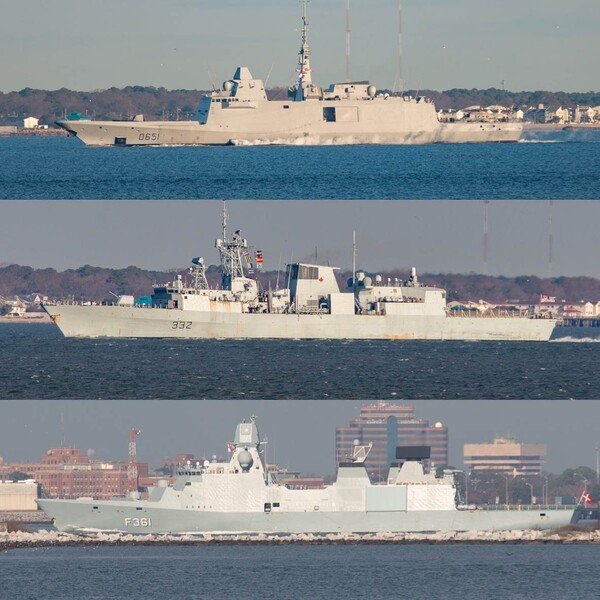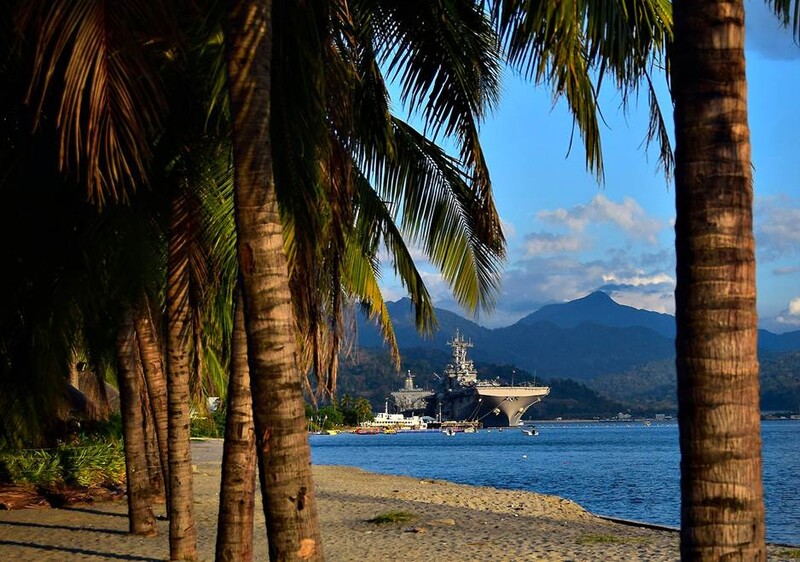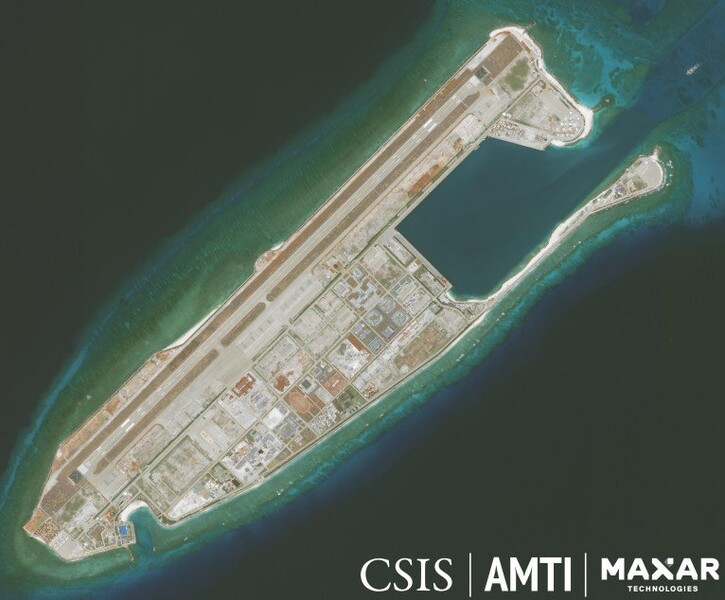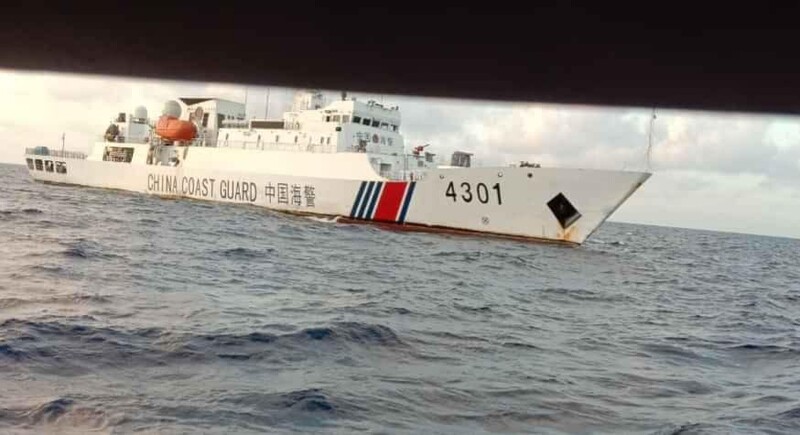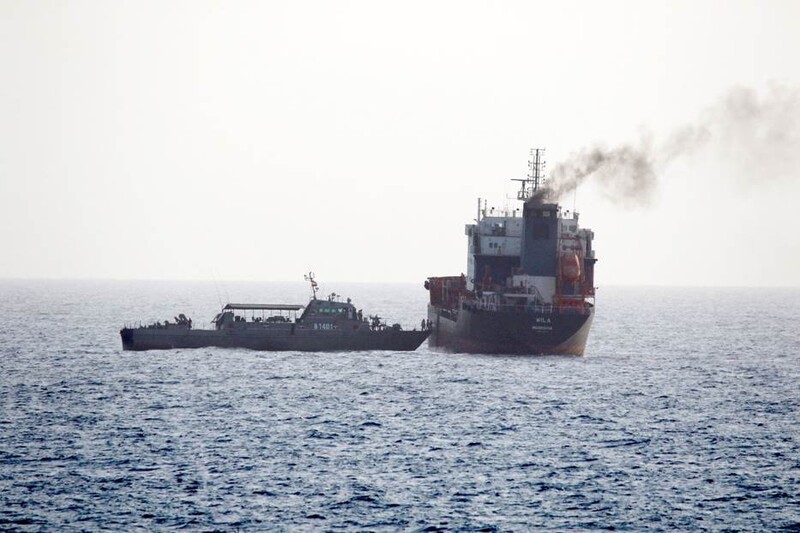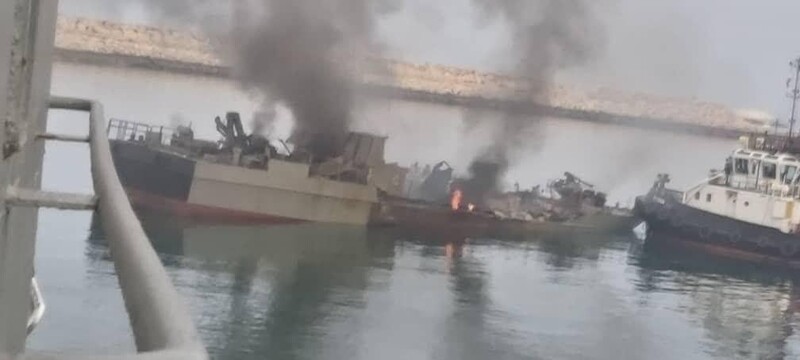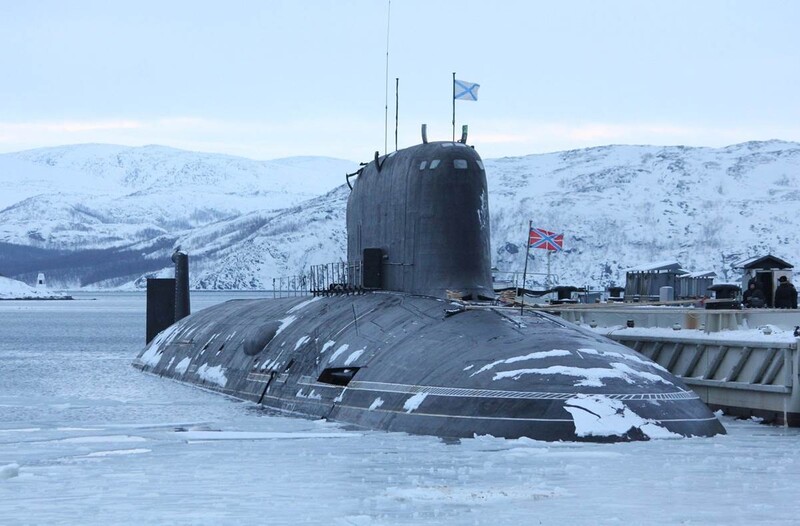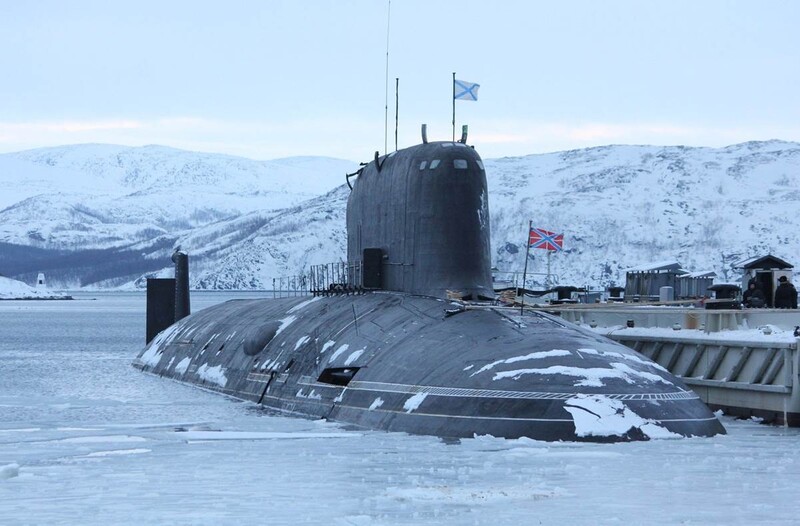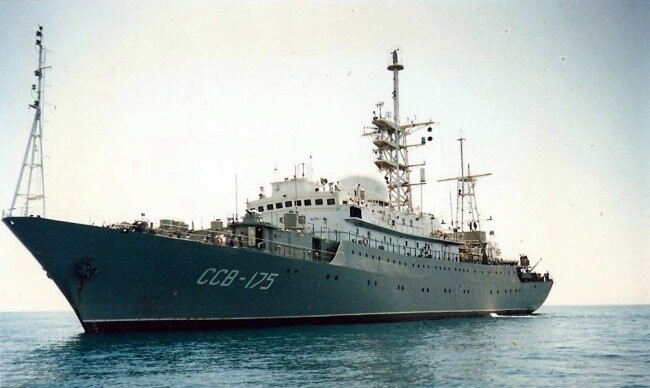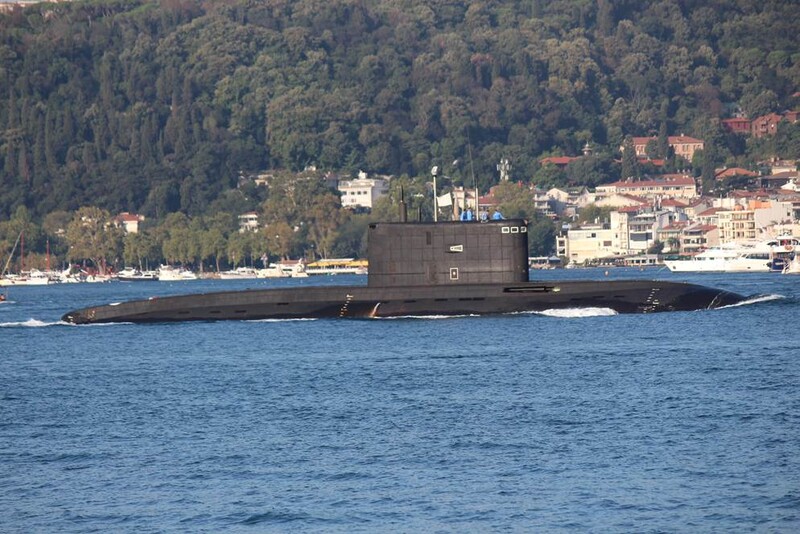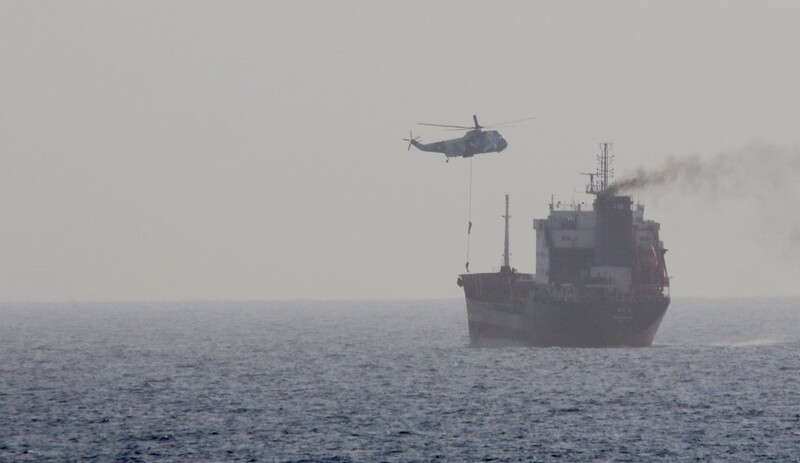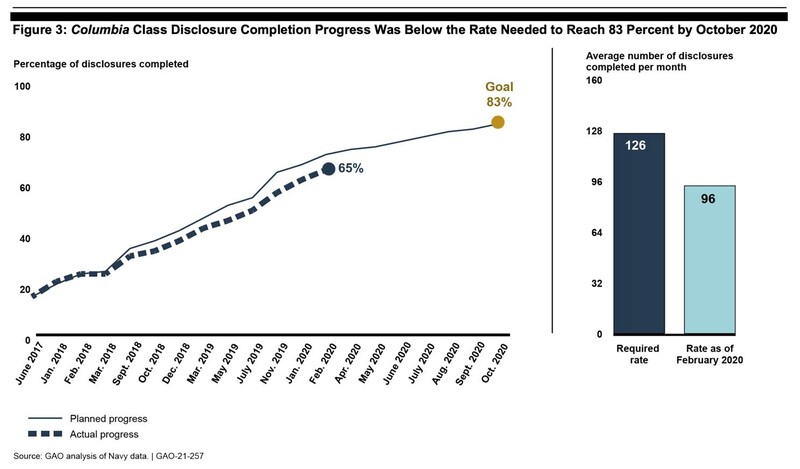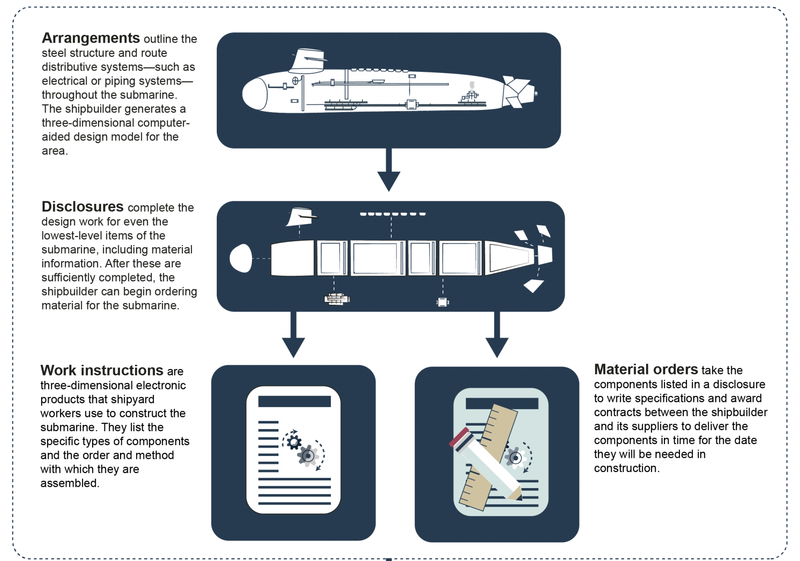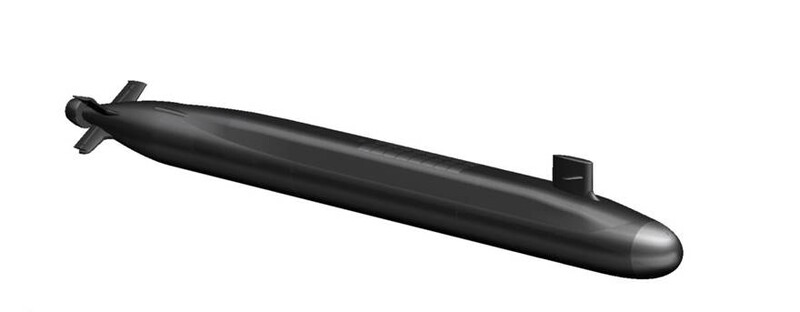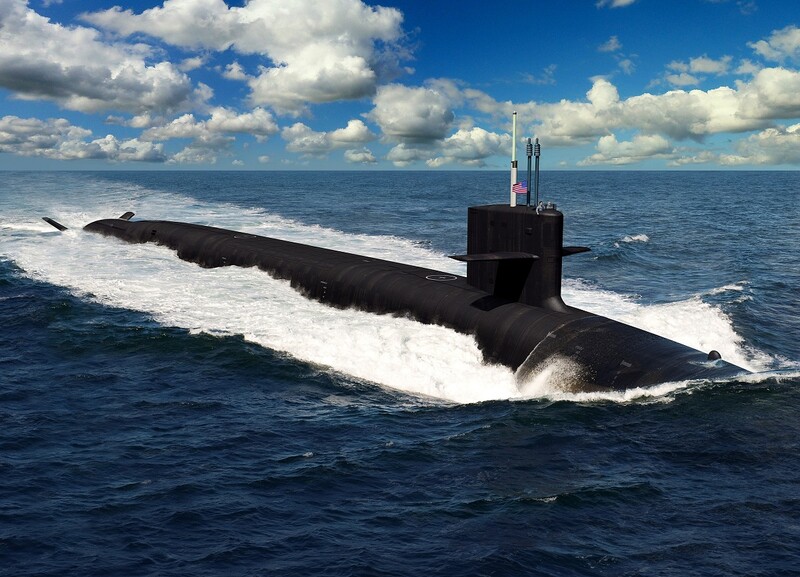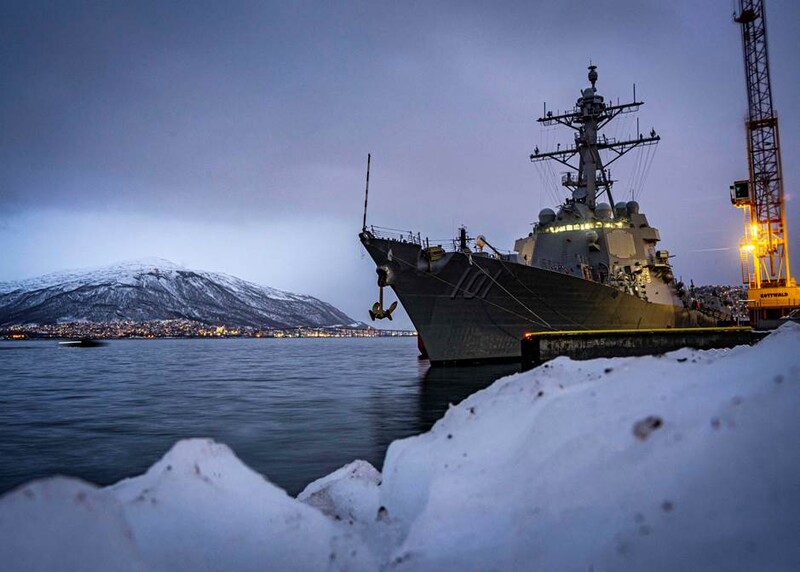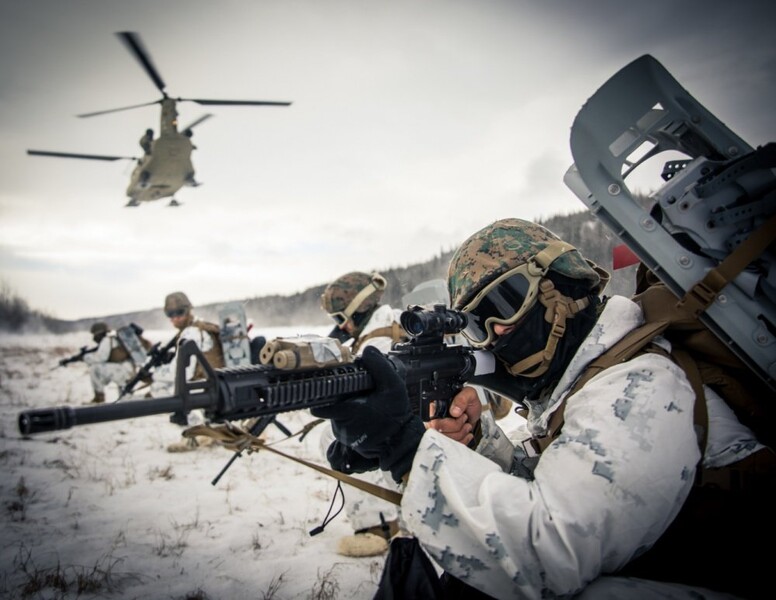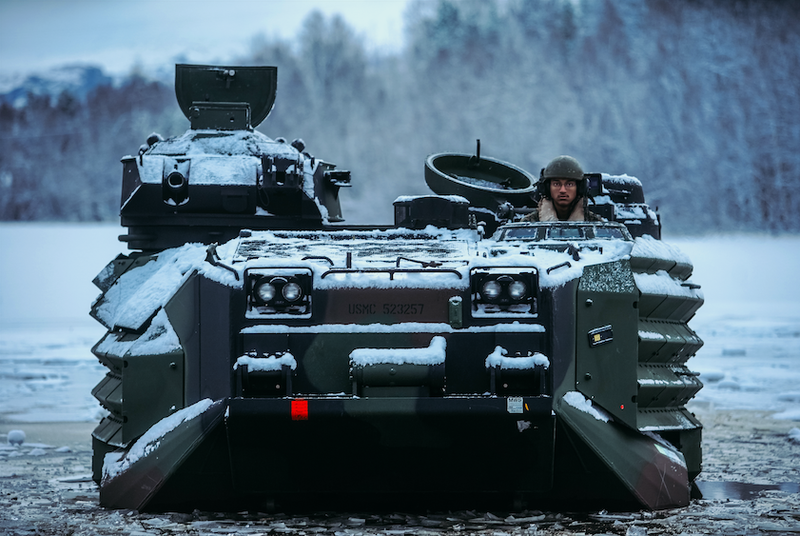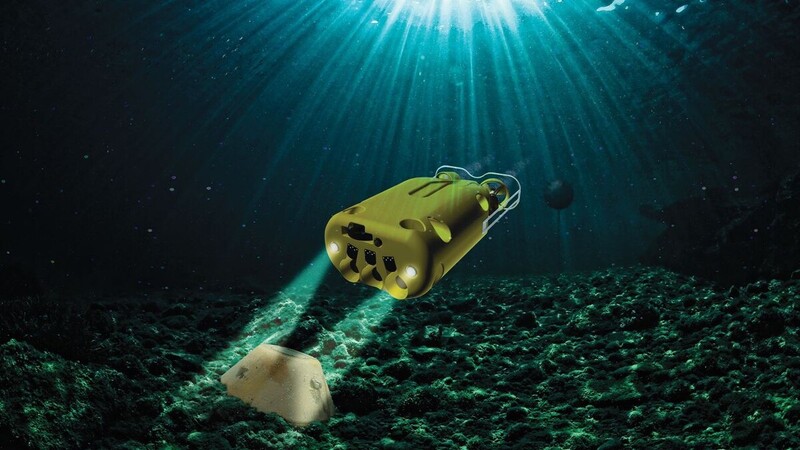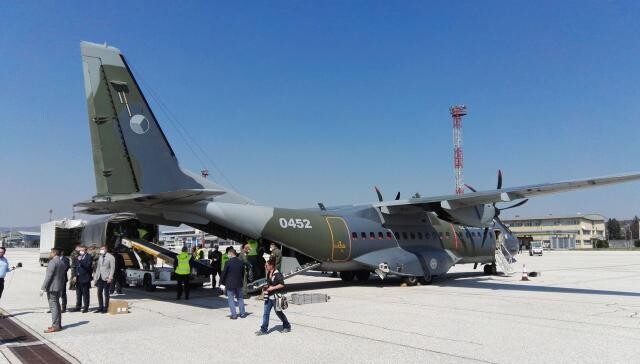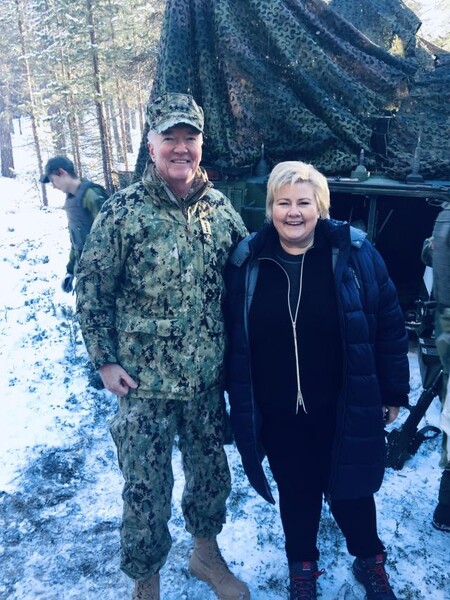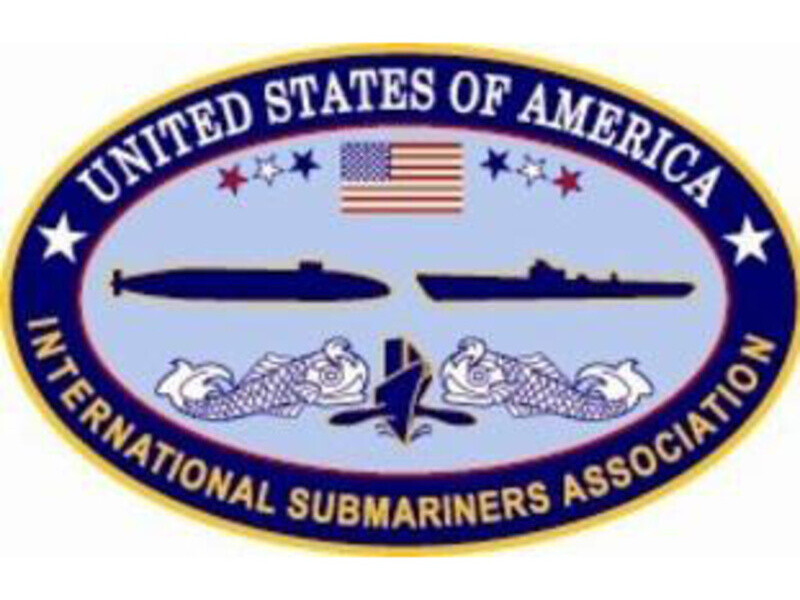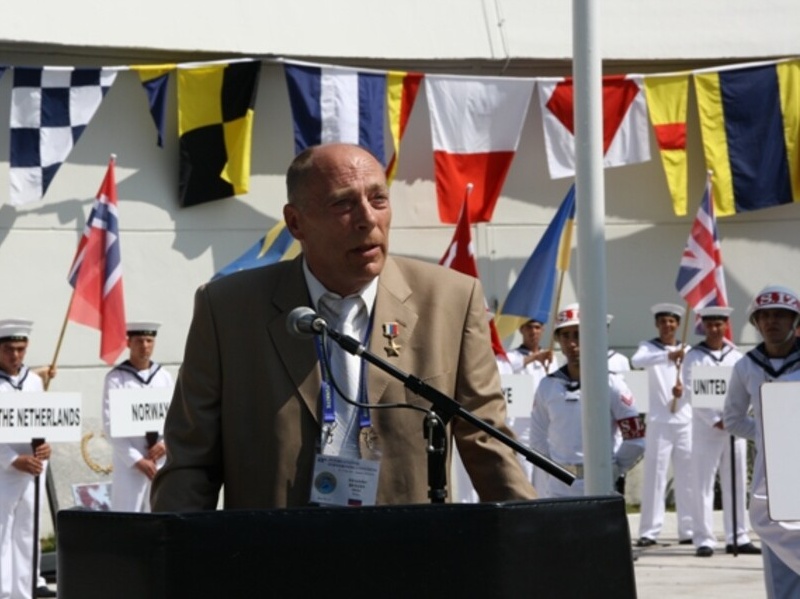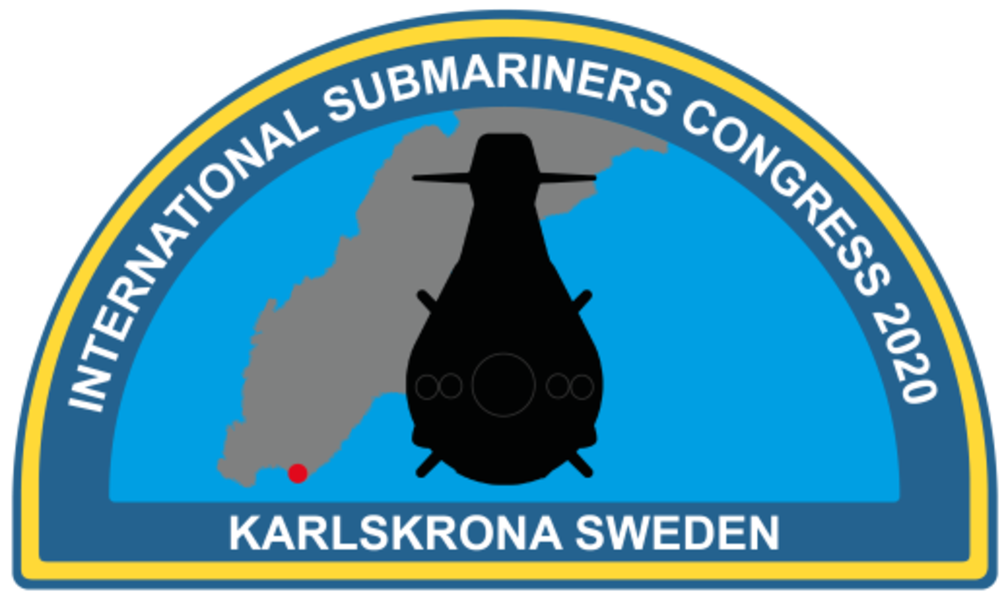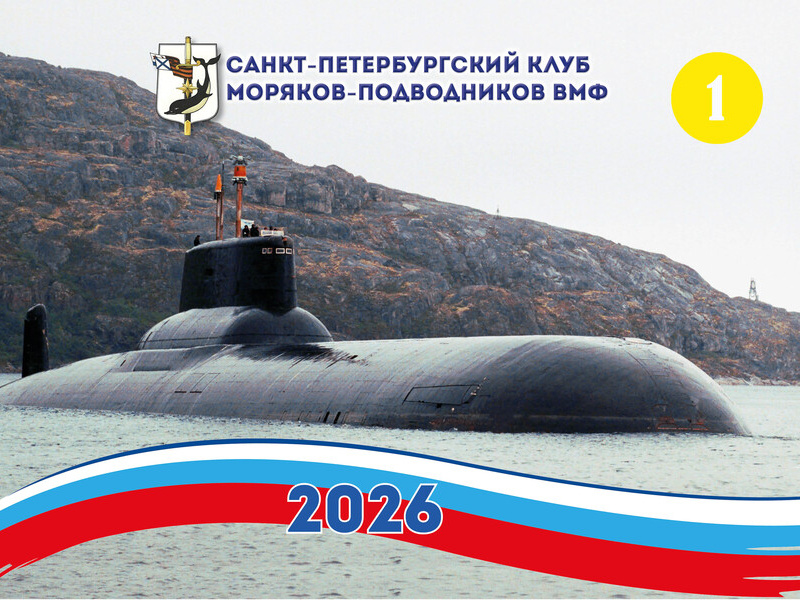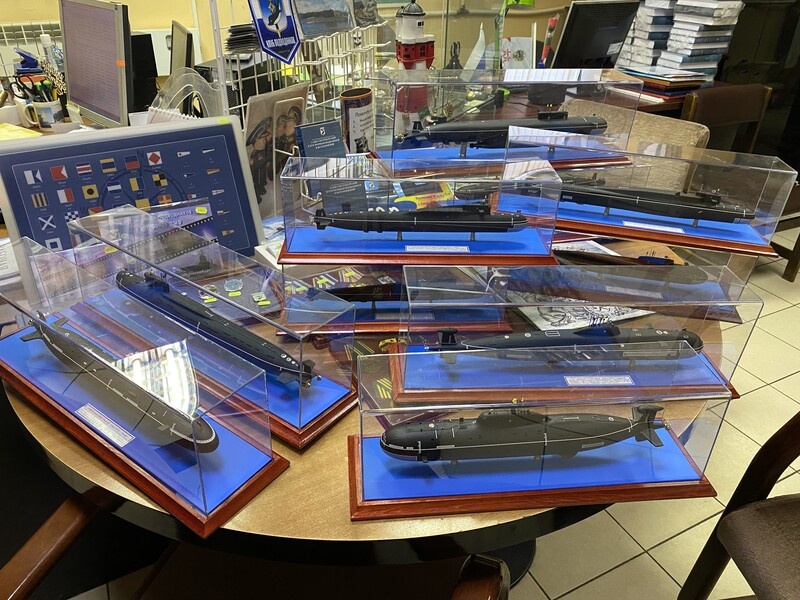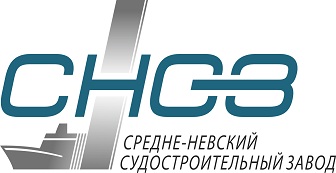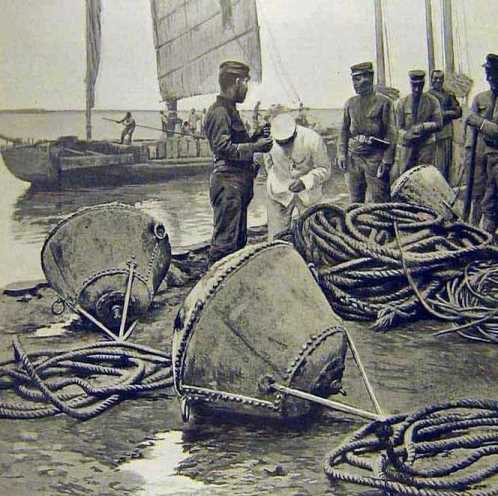reetings from a bent, bruised but not down, United States of America to our Brothers and Sisters in the Submariners international Community.
After a Spring, Summer, and Fall of nationwide protests, which were somewhat peaceful except for some isolated vandalism and some violence, our nation was subjected to an attack on the Government itself. After a Political Rally on the National Mall on the 6th of Jan., several thousand participants turned violent and attacked our Capital building. The United States Capitol Building is the cradle of Democracy and was thoroughly sacked to stop Congress from voting on certifying our new President and Vice-President. As they were finally escorted out of the building, our Congress reconvened among the rubble, performed their constitutional duties, and certified Joe Biden for president and Kamala Harris as Vice-President. Democracy won, and the insurrectionists lost.
Thanks to all of you that contacted us and offered words of encouragement in the face of this terrible attack on the strongest Democratic nation in the world. Now, with a new Government in Washington on Wednesday, the 20th of Jan., we are looking forward to resuming our rightful place alongside the Nations of the World.
The second bit of good news is. The COVID Vaccine is beginning to make rounds in America. I received my first shot on the 6th of Jan. and am due to get the second on the 28th of Jan. That means Sweden is in the cards for May of 2022. Lars will be eternally grateful to have all of us in Karlskrona.
Thanks, Bud.
For our overseas Submarine Community and those at home who may be interested in the festivities surrounding the Inaugural:
The following with links to computer streaming sites is the Schedule for the Inauguration Festivities in heavily protected Washington, DC
Most events may be seen by clicking on:
(165) Biden Inaugural Committee - YouTube
(20+) Biden Inaugural Committee | Facebook
(19) Biden Inaugural Committee (@BidenInaugural) / Twitter
Good morning Mr. Cunnally:
We are excited to share all the great programming the Presidential Inaugural Committee (PIC) has planned for the inauguration of Joseph R. Biden, Jr. and Kamala D. Harris to celebrate the beginning of a new national journey toward an America united.
Over the course of five days of programming, “America United” activities will honor our traditions while safely allowing more Americans and our friends from other countries than ever before to participate from their own homes.
For our full schedule of events, please click here.
Monday, January 18th
United We Serve: A Celebration of the National MLK Day of Service: On Monday, January 18, 2021, thousands of volunteers across the country will participate in the National Day of Service - an opportunity for all Americans to unite and serve at a time when the global pandemic calls on us to work together and support our communities. Find an event near you here.
The day will culminate in an hour-long celebration that will feature a diverse array of entertainers, inspiring speakers, and stories celebrating Martin Luther King Jr.'s legacy and the Biden-Harris Administration's commitment to service. The event will stream live on Monday, January 18, from 8:00-9:00 PM EST at bideninaugural.org and on PIC social media platforms.
Thank you to everyone who has supported the National Day of Service. If you haven’t signed up to volunteer yet, it’s not too late! So many volunteer organizations are in need right now, and our goal is to encourage everyone to find an organization they can volunteer with, not only on Monday, but throughout the year. Please join in honoring the life and legacy of Dr. King by signing up to volunteer and spreading the word amongst your friends, family, and neighbors!
Tuesday, January 19th
Nationwide COVID-19 Memorial: On Tuesday, January 19th, the PIC will host a memorial to remember and honor the lives lost to COVID-19 as part of inaugural activities. On Tuesday, January 19, will feature a lighting around the Lincoln Memorial Reflecting Pool, and PIC is inviting cities and towns around the country to join in illuminating buildings and ringing church bells at 5:30 p.m. ET in a national moment of unity and remembrance. The event will stream live on Tuesday, January 19, from 5:30-6:30 PM ET at bideninaugural.org and on PIC social media platforms.
Wednesday, January 20th
Inauguration: On Wednesday, January 20, the 59th Inaugural Ceremonies will begin broadcasting at 10:00 AM ET. At noon, Joseph R. Biden, Jr. and Kamala D. Harris will be sworn in as President and Vice President of the United States on the West Front of the U.S. Capitol.
Pass In Review: After the official swearing-in ceremony on the West front of the U.S. Capitol, the President-elect, Dr. Biden, Vice President-elect, and Mr. Emhoff will participate in a Pass In Review on the East front with members of the military. Pass In Reviews is a long-standing military tradition that reflects the peaceful transfer of power to a new Commander-in-Chief.
Arlington National Cemetery Wreath Laying Ceremony at the Tomb of the Unknown Soldier: The President-elect, Dr. Biden, the Vice President-elect, and Mr. Emhoff will visit Arlington National Cemetery following the swearing-in ceremony and Pass In Review at the U.S. Capitol following the Inaugural ceremonies. They will be joined by President Barack Obama and Michelle Obama, President George W. Bush and Laura Bush, and President Bill Clinton and Secretary Hillary Clinton.
Presidential Escort and Parade Across America: The President-elect will receive a Presidential Escort to the White House. This will be followed by a “Parade Across America,” which will be televised for the American people and feature diverse, dynamic performances in communities across the country.
“Celebrating America” Primetime Special: This will be the prime-time capstone program for the inauguration of Joseph R. Biden, Jr. and Kamala D. Harris to celebrate the beginning of a new national journey toward an America united. Tom Hanks will host this night on January 20 from 8:30-10:30 pm. ET and will showcase the American people’s resilience, heroism, and unified commitment to coming together as a nation to heal and rebuild.
Eva Longoria and Kerry Washington will introduce segments throughout the night ranging from stories of young people making a difference in their communities to musical performances. Foo Fighters, John Legend, Bruce Springsteen, Demi Lovato, Justin Timberlake, Ant Clemons, and Jon Bon Jovi will perform from iconic locations across the country, with additional performances to be announced.
The program will be carried live by ABC, CBS, CNN, NBC, MSNBC, and PBS. It will be streamed live on PIC social media channels: YouTube, Facebook, Twitter, and Twitch. The PIC’s streaming partners, including Amazon Prime Video, Microsoft Bing, NewsNow from Fox, and AT&T DIRECTV and U-verse, will also be carrying the program live.
Events will be live-streamed at bideninaugural.org and on the PIC’s social media platforms, including YouTube, Facebook, and Twitter.
Talk to you soon,
Danielle Decker
Director of Coalitions
Presidential Inaugural Committee
Join 31 Other Nation's Submariners for fun and travel; once this Virus is gone.
|
|
|
|
|
|
Consider becoming a member of the ISA-USA; you will benefit in many ways.
- Be part of a 50-year tradition of international friendships of submarine sailors. Check out www.submariners.org for the history of the International Association
- Travel to foreign countries to participate in conventions that usually include thirty-one states in attendance.
- Establish friendships with submariners from other nations.
- Contribute your Submarine history and experience in our World Wide e-mail blast.
- We Cheerfully accept members that have not served but are interested in worldwide submarine activities
Lifetime membership only $50.00.
ISA/USA Membership Application. All new ISA/USA members receive a Membership card, ISA/USA Patch, and a new larger Vest Pin. On our weblink below and print an application:
Send completed form and membership fee to:
John Bud Cunnally E.T.C. (SS) Ret. USN – President
International Submariners Association of the USA (ISA/USA)
4704 Coppola Drive
Mount Dora, Fl 32757-8069
We have lost one of our former Board of Directors on Eternal Patrol:
"I have one consolation that lives with me today that God is near to them, in his unique way. So, Jesus in all Your mercy, keep near Thyself the soul, Of every Submariner, on their final patrol.
Lord, this departed shipmate Brad Canutt with Dolphins on his chest is part of an outfit known as the best. Make them welcome and take by the hand through heaven’s gate. Without a doubt, you will find they were the best in all the land.
So, heavenly Father, please add Brad Canutt to the rolls of our departed shipmates still on patrol. Let them know that we who survive will always keep their memories alive."
“Sailor, rest your oars.” You stand relieved. We have the watch.
Speaker Nancy Pelosi Appoints Rear Admiral Margaret Grun Kibben, First Woman to Serve as Chaplain of the US House of Representatives
THE 31ST OF DEC., 2020
PRESS RELEASE
Washington, DC – Speaker Nancy Pelosi today announced her appointment of Rear Admiral Margaret Grun Kibben as House Chaplain, following Father Pat Conroy's House retirement. Kibben will be the first woman to serve as Chaplain in either chamber of Congress.
"It is my honor to announce the appointment of Rear Admiral Margaret Grun Kibben to serve as Chaplain of the United States House of Representatives: the first woman to serve in this historic position, which has been enshrined in our Democracy since the First Congress in 1789," said Speaker Pelosi. "Kibben brings decades of decorated experience in the military and the ministry, as a retired Rear Admiral who served as the US Navy's Chief Chaplain and the chaplain of the Marine Corps. Her integrity, experience and patriotism will serve the Congress and the Country well, as she ministers to the needs of Members. This historic appointment was made possible by the values-based leadership of Congressman Emanuel Cleaver, and I thank him and all Members of the bipartisan group leading the search – Representatives Eshoo, Price, Connolly, Moolenaar, Luetkemeyer, McMorris Rodgers and Stauber – for their successful work. Their recommendation was accepted by Leader McCarthy and me."
"The service of Father Pat Conroy has been a blessing to Members on both sides of the aisle," continued Speaker Pelosi. "Throughout his service, Father Pat fulfilled the calling of St. Ignatius of Loyola: 'for the greater glory of God.' His service has been a spiritual and moral anchor for Members, grounding our institution in the values of faith and country and reminding our Members of our responsibilities to our great nation and constituents. All Members wish Father Pat well as he enjoys his well-deserved retirement from the House."
Rear Adm. Margaret Kibben entered active duty in 1986 through the Navy's Theological Student Program. She holds a Bachelor of Arts from Goucher College, a Master of Divinity and Doctor of Ministry from Princeton Theological Seminary and a Master's in National Security and Strategic Studies from the Naval War College. In her final active duty assignment in the Navy, Kibben was the US Navy's 26th Chief Chaplains. Prior to this assignment, Kibben served as the 18th Chaplain of the Marine Corps. Kibben served as the senior chaplain in Afghanistan. Her Navy assignments include the US Naval Academy, the Chaplain Corps Resource Board, command chaplain aboard USS San Diego (AFS 6) and Fleet Chaplain, U. S. 3rd Fleet. With the U.S. Marine Corps, Kibben served as chaplain for Headquarters and Service Battalion, Security Battalion, the Brig, Marine Corps Air Facility and HMX-1, Marine Corps Base Quantico and 2nd Force Service Support Group, Camp Lejeune. Kibben's personal awards include the Distinguished Service Medal, Legion of Merit (two awards), Bronze Star, Meritorious Service Medal (three awards) and Navy Commendation Medal (three awards).
Celebrating NATO's 72nd Anniversary: Time for Members to Renew Their Vows
By Admiral James Foggo III, US Navy (Retired), and Vera Zakem
January 2021
Proceedings
Vol. 147/1/1,415
When visitors come to the North Atlantic Treaty Organization's (NATO's) Headquarters in Brussels, one thing that stands out is the powerful 9/11 Memorial that commemorates the only time in the alliance's history that it invoked Article 5, in solidarity with the United States. When NATO was formed in 1949, many hoped—but few imagined—it would become the most successful alliance in history and a pillar of strategic defense for our democracies and shared values.
NATO is not just a marriage of convenience—it represents a lasting relationship of almost 72 years that cannot be replicated. Our adversaries, including Russia, China, Iran, and North Korea, have nothing like it. In recent years, however, there have been some cracks in the marriage that require attention by governments on both sides of the Atlantic. The United States has been right to remind other alliance members of their obligation to spend 2 percent of their gross domestic product on defense. That message has not always been well received, but it is important for all members to shoulder their fair share of the burden. On the other hand, unilateral US decisions to reduce troop levels or headquarters elements in Europe, Afghanistan, and Iraq have reduced our allies' and partners' confidence in the US commitment to the marriage.
During NATO Exercise Trident Juncture in 2018, the author visited forces in the field with Norwegian
Prime Minister Erna Solberg. (author photo)
The key to NATO's success—like any successful relationship—is that it grows and adapts to new circumstances. NATO has adapted and evolved to counter emerging threats from new authoritarian regimes and violent extremist organizations who seek to destabilize free, democratic societies and terrorize their populations. But new threats are looming on the horizon, and without careful reexamination and staunch recommitment, NATO could be unprepared to tackle emerging challenges in domains like cyber and space.
In fact, the NATO 2030 report warns that our adversaries—including Russia, China, Iran, and violent extremist organizations—are ramping up the speed and frequency of their attacks, influence campaigns, and technological competition. Take Russia, for instance, which has used a conventional troop build-up in Crimea and waged disinformation and malign influence campaigns in Georgia, the United States , and the Western Balkans to polarize democratic societies and spread anti-NATO, anti-EU, and "us versus them" narratives. China has waged influence and disinformation campaigns in both Europe and Africa during the COVID pandemic. Beijing has also promoted digital authoritarianism, used military exercises to cow its neighbors, and economic and technological espionage to fuel its economic and military expansion.
President-elect Joseph Biden has said, "NATO is at the very heart of the United States' national security, and it is the bulwark of the liberal democratic ideal." As his administration begins its term, there are several steps it can take to strengthen the alliance for the challenges facing it this decade.
We believe the first step is to remind the American public that NATO is their strongest and most important alliance, and it will stand shoulder-to-shoulder with the United States in time of need. The new president should attend the 2021 Munich Security Conference and embrace NATO in a public and vocal way. A similar message can be reinforced at the proposed Summit for Democracies and the next NATO Summit.
Second, the Biden Administration must work with NATO in the global COVID response. The COVID-19 pandemic is a national security issue, and NATO has stepped up to provide military airlift, set up field hospitals, share medical expertise, and provide personal protective equipment. But stronger collaboration with the United States, including the dissemination of the vaccine, is needed. Strengthening our collective response to COVID will save lives. COVID represents a clear and present danger to the national security, health, and welfare of every NATO country, on both sides of the Atlantic.
A Czech Republic military aircraft delivers COVID-related medical aid to North Macedonia in the
spring of 2020. (NATO photo)
Third, given its commitment to diversity and inclusion, the Biden Administration can join NATO's call to strengthen women, peace, and security. Together, the Alliance can work on a joint agenda to ensure women are integrated and treated fairly at every level of civilian and military life.
Fourth, the Biden Administration must work aggressively with NATO to counter the threats posed by disinformation, cyberattacks, technological competition, digital authoritarianism, and election interference. As a start, the new administration should lead an effort to establish and agree on a set of norms that all NATO members must follow to work together to address these challenges. As part of this line of effort, the Biden Administration could work with NATO to establish Article 5 red lines when a member nation is attacked in cyberspace or another nation interferes in its elections. Furthermore, the new Pentagon leaders will need to work closely with NATO to address technological competition. Technologies such as artificial intelligence and machine learning present enormous opportunities to strengthen our collective security and democracies. Yet, our competitors and adversaries such as China and Russia are forging ahead and using these technologies to spread disinformation, suppress populations, and carry out attacks in cyberspace. Strong commitments and investments in the NATO Strategic Communication Centre of Excellence and Cooperative Cyber Defence Center of Excellence will allow us to better counter foreign disinformation and cyber campaigns. Most important, resilient societies make for strong democracies that are capable of withstanding external interference from adversaries and competitors. As such, NATO should adapt the NATO 2030 report recommendation and stand up a Center of Excellence for Democratic resilience to prevent the kind of democratic backsliding we have been witnessing on both sides of the Atlantic.
Finally, the new president should maintain US troop presence in Europe and Africa. Intelligence, surveillance, and reconnaissance capabilities increase information sharing, and US missile defense is critical to alliance security. Similarly, the United States should work with NATO to maintain a presence in Africa, to support peacekeeping operations and thwart attacks from violent extremist organizations and state-sponsored malign influence and disinformation campaigns. This includes supporting the NATO Strategic Direction South Hub Initiative, which can serve as an example for other cross-regional NATO initiatives moving forward. Headquartered in Naples, Italy, the Hub complements the Trans-Atlantic Bridge by building new bridges between Europe, Africa, and the Middle East through coordination, communication, and collaboration to address emerging stability and security threats in Africa.
NATO stood with the United States in our time of need after 9/11 because the alliance was fit for purpose and prepared to meet emerging challenges. President-elect Biden must renew, reinvigorate, and strengthen NATO, so that when America and the world need it most, the oldest and most capable security alliance in the world is ready to respond.
Summary of Low-Yield Nuclear Warhead Debate
The 6th of Jan., 2021 10:02 AM
The following is the 5th of Jan., 2021 Congressional Research Service In Focus report, A Low-Yield, Submarine-Launched Nuclear Warhead: Overview of the Expert Debate.
From the report
The Low-Yield D-5 Warhead
The US developed a new low-yield version of the W-76 warhead for existing submarine-launched Trident II (D-5) missiles. Unclassified sources state that the existing W76-1 warhead has an explosive yield of around 100 kilotons. The National Nuclear Security Administration (NNSA) has said the low-yield version, the W76-2, would be configured "for primary-only detonation." This could mean a yield of less than 10 kilotons.
Congress appropriated $65 million for the W76-2 warhead in FY2019 and $10 million to complete work in FY2020. It also authorized $19.6 million in FY2020 for the Navy to integrate the warhead into the submarine force. NNSA completed the first modified warhead in February 2019, began delivering warheads to the Navy by late 2019, and completed the deliveries during FY2020. The Pentagon reported in February 2020 that the Navy had begun deploying the warheads by that time. NNSA did not disclose the total number produced, although it is likely just a very small portion of the W76 stockpile (estimated, in unclassified sources, to be around 1,300 total warheads).
The US introduced the low-yield version of the W76 warhead in the 2018 Nuclear Posture Review (NPR). It cited the need for additional "tailored" and "flexible" capabilities to address the danger of coercive nuclear use, a concept described below, by Russia and North Korea. The NPR stated that this warhead would supplement existing US strategic nuclear capabilities to "enhance deterrence by denying potential adversaries any mistaken confidence that limited nuclear employment can provide a useful advantage over the United States and its allies," and that low-yield warheads would not add to the number of deployed SLBM warheads, but would replace some "higher-yield [SLBM warheads] currently deployed."
The NPR report, and its argument in favor of a low-yield SLBM warhead, launched a debate among US experts about the rationale for the development of such a warhead and the benefits and risks that might accrue from its deployment. While some argue that this warhead is a response to Russia's so-called "escalate to de-escalate" strategy that will strengthen deterrence and raise the nuclear threshold, others contend that it will lower the threshold for US use and increase the risk of nuclear war.
Download the document here.
Saab to build underwater robots for French-British naval countermine program
By: Sebastian Sprenger 3 days ago
18
An artist rendering of Saab's demining robot inspecting an underwater explosive device. (Saab)
COLOGNE, Germany — Swedish vendor Saab has received a contract to deliver underwater vehicles for blowing up sea mines to an Anglo-French program, the company announcedthe the 8th of Jan.
The deal, valued at 300 million Swedish kronor (US $37 million), is for Saab's Multi-Shot Mine Neutralization System, or MuMNS, which is comprised of a remote-controlled vehicle capable of inspecting all manner of mines and attaching explosive charges to them.
The robots can carry three such loads, meaning several mines can be readied for detonation during one run.
The company expects to deliver the first vehicles to France's Thales, which manages the binational program as the main contractor, in 2022. The pan-European Organisation for Joint Armament Co-operation manages the effort on behalf of France and the United Kingdom under the name Maritime Mine Counter Measures, or MMCM.
That program, in turn, envisions a wholesale overhaul of countermine equipment and tactics in both countries, relying heavily on unmanned platforms.
"We are proud to announce our first customers of the MuMNS," Görgen Johansson, head of Saab subsidiary Dynamics, was quoted as saying in a statement. "It's a great success to deliver capabilities that enable these navies to perform safer and more efficient mine countermeasures operations, since the operator can neutralize multiple sea mines from a safe distance."
The French and British anti-mine program is rooted in the 2010 Lancaster House Treaty between the two countries. Initial study work began in 2015.
Besides Saab's vehicle, there are five other technologies rounding out the MMCM package, including additional robots and sensors. Manufacturers include companies ECA, ASV and Thales.
New Arctic Strategy Calls for Regular Presence as a Way to Compete With Russia, China
By: Megan Eckstein
The 5th of Jan., 2021 7:46 PM
U.S. Marines with Marine Rotational Force-Europe 21.1, Marine Forces Europe and Africa, conduct a safety of use memorandum (SOUM) on an assault amphibious vehicle in preparation for Exercise Reindeer II, Reindeer I, and Joint Viking in Setermoen, Norway, the 19th of Nov., 2020. US Marine Corps Photo
The Navy and Marine Corps released a new Arctic strategy today, calling to extend their new focus on day-to-day competition with Russia and China into the Arctic as it becomes more navigable and, therefore more congested in the coming decades.
Citing an expected rise in the use of Arctic waters for commercial shipping, natural resource exploration, tourism and military presence, the strategy calls for the Navy and Marine Corps to increase regular presence in the Arctic. Doing so will require the sea services to collaborate with allies as well as domestic partners like the Coast Guard and Alaska law enforcement organizations, and focus research and acquisition decisions on being able to operate successfully in the High North.
This strategy – A Blue Arctic: A Strategic Blueprint for the Arctic – comes on the heels of last month's tri-service maritime strategy signed by the Navy, Marines and Coast Guard and continues the current leadership's push to explain what role the sea services will play in global operations going forward.
"In the decades ahead, rapidly melting sea ice and increasingly navigable Arctic waters – a Blue Arctic – will create new challenges and opportunities off our northern shores. Without sustained American naval presence and partnerships in the Arctic Region, peace and prosperity will be increasingly challenged by Russia and China, whose interests and values differ dramatically from ours," reads the strategy.
"Competing views of how to control increasingly accessible marine resources and sea routes, unintended military accidents and conflict, and spill-over of major power competition in the Arctic all have the potential to threaten US interests and prosperity. These challenges are compounded by increasing the risk of environmental degradation and disasters, accidents at sea, and the displacement of people and wildlife as human activity increases in the region."
Secretary of the Navy Kenneth Braithwaite speaks with US sailors and Marines while visiting HMS Queen Elizabeth at sea off the coast of Flamborough, United Kingdom on the 1st of Oct., 2020. UK Royal Navy Photo
Navy Secretary Kenneth Braithwaite told reporters today that the Navy and Marine Corps have remained present in the Arctic in recent decades, but that presence has largely been under the ice or in the air. As competition in the region grows, he said, it will be important to have a more visible surface presence – with both manned and unmanned ships – to make clear that the US will operate in all international waters, including those above the Arctic Circle.
He cited several recent examples of high-profile Navy presence in the Arctic – the Harry S. Truman Carrier Strike Group venturing into the Arctic Circle for the first time since the fall of the Soviet Union and participating in NATO's Trident Juncture 2018 exercise, the Theodore Roosevelt Carrier Strike Group's participation in Northern Edge 2019 off Alaska, and multinational surface actions groups operating in the Barents Sea and other Arctic waters last year – as the types of presence operations he'd like to see more of.
Braithwaite was careful not to commit the US Navy to too much operational presence there – rather, he said the Navy needed to have a consistent presence in the Arctic but also be dynamic and unpredictable. Essentially, the Navy needs to create the perception that there's always the possibility it could be operating under, on or over the Arctic at any given time.
The Seawolf-class fast-attack submarine USS Connecticut (SSN 22) surfaces through the ice as it participates in Ice Exercise (ICEX) 2018. US Navy photo.
To be more present, the Navy will need several things.
First, it needs ports and airfields to operate from.
On that front, Braithwaite suggested it was unlikely that the Navy itself would build new infrastructure but rather would look to leverage existing locations operated by joint and international partners.
Sen. Dan Sullivan (R-Alaska) asked Braithwaite during his confirmation hearing last year about looking into investing in a strategic Arctic port in Alaska. Braithwaite told reporters today that he was stationed in Adak when he was a young pilot and did in fact return there as Navy secretary to make good on his promise to Sullivan.
"Unfortunately, it looks like the set from a zombie apocalypse, to be very honest with you. That's a very harsh environment, it's been very harsh on the infrastructure there. It would cost an inordinate amount of money to reopen it," he said.
"But there are other options that we have to be able to operate out of other airfields in that part of the world, in the Arctic. Of course we have our partnerships with our NATO allies: there's a new air station opening up in Evenes, Norway, that can support both the P-8 and the Joint Strike Fighter, and we've been working with the Norwegian ministry of defense" to coordinate on the US Navy making use of that airfield.
Lance Cpl. Andrew Z. Munoz, right, a motor vehicle operator with 7th Engineer Support Battalion, 1st Marine Logistic Group, provides security at Fort Greely, Alaska on the 19th of Feb., 2020. US Marine Corps Photo
"It’s no secret, I visited the Coast Guard base while I was in Alaska in Kodiak, to look at what the port facilities were there, what the airfield – the runways, the condition, the length, all the rest of that – if we could begin to operate P-8s from that airfield,” the SECNAV continued.
“So I think a lot of those things are on the table for my successor and the Navy uniformed leadership to determine. But I do believe with all my heart and soul that you will see the Navy operating again in a more permanent manner above the Arctic Circle from either our allies’ bases or from some of the bases that we share with some of the other uniformed services.”
Second, the Navy will need the right equipment to operate in the High North.
The strategy document lays out several areas of investment for the Navy:
- The Department will continue leading critical advancements in research, development, testing, and evaluation – including the development of cold weather-capable designs, forecasting models, sensors, high latitude communications, and navigation systems – while enhancing our ability to meet future demands.
- Command, control, communications, computers, cyber, intelligence, surveillance, and reconnaissance (C5ISR). The Department will assess and prioritize C5ISR capabilities in the Arctic Region, to include resilient, survivable, and interoperable networks and information systems of naval tactical forces, operations centers, and strategic planning. These capabilities will enhance domain awareness with the joint force, US interagency, allies, and partners in the Arctic Region.
- Naval Forces. The Department will evaluate and modernize existing and future forces to provide manned and unmanned operational presence and patrol options in cold weather and ice-diminished Arctic waters. We will improve hydrographic surveys and sensors to support the Fleet. In a Blue Arctic, the Department must have a more credible presence in Arctic waters. This means ensuring that Arctic operations are considered in our design and modernization plans, and that our defense industrial base can build and sustain forces for the Arctic.
Braithwaite told USNI News during the media call that “a lot of our global positioning systems do not work in the High North, and therefore as those seaways open up and ships and aircraft begin to transit those spaces, we have to think through how we operate.”
USS Gridley (DDG-101) is moored pierside in Tromso, Norway, during a brief stop for fuel on the 23rd of Nov., 2019. US Navy Photo
He said much of that work was classified and he couldn’t discuss it in detail, but he said some of the Navy’s Arctic allies had solutions that the US Navy would be interested in leveraging.
As for preparing ships to operate in the Arctic, he acknowledged that the Navy would have to consider whether to ice-harden any ship hulls, which would allow greater access in the Arctic but would also cost quite a bit. He noted a long-term need to be present in the Arctic but said that the next several Navy secretaries and chiefs of naval operations would have to figure out how much to invest in getting the ships ready for that environment. As the Navy increases its usage of unmanned systems, sending them up into regions inaccessible to manned ships may be a way to strike a balance, he noted.
Braithwaite also discussed the idea of the Navy buying icebreakers, an idea that stems from a June memo by President Donald Trump that called for a more capable Arctic and Antarctic icebreaking fleet by 2029. The Coast Guard has been in charge of that mission in recent decades, but Braithwaite said in a December Senate Armed Services Committee hearing that the Navy was looking into purchasing icebreakers for its own use. He repeated that idea again in the media call today.
In the SASC hearing, Braithwaite said he went to Finland to see icebreakers there as a possible solution the Navy might consider buying. He said it was important that the US have an icebreaker construction capability but that today the US can’t build fast enough to meet Trump’s directive.
“It’s not a mission that is central to the United States Navy, but it’s one that we rely on the Coast Guard to provide, and in this instance, per the executive order, we are looking at ways to procure those,” Braithwaite said during the hearing.
“We are looking within the Department of the Navy at how we can facilitate that. Part of commissioning those ships means that they become US naval vessels, and there are requirements that we have to have US naval personnel in command of those vessels. So I’ve asked the [chief of naval operations] to look into the process by which we could facilitate that,” he added.
Today, he told USNI News during the media call that he met with the White House just today about the ongoing research into finding an icebreaker capability for the Navy.
“We had a meeting today, we are in discussions with the White House on what the best course forward is for us to procure icebreakers,” he said. He said most of the discussion around the Navy procuring icebreakers was classified, but he said “we have several options on the table, I think we’ll be able to announce that in the not-too-distant future” and that the Navy was “working in concert with the Coast Guard, who would continue to have the lead in that space.”
And third, the Navy would need a clear mission.
The Arctic strategy document lays out the need for presence with the end goal of winning day-to-day competition, to avoid a greater crisis or conflict later on. This thinking is laid out in greater detail in the tri-service maritime strategy, which focuses on what the Navy, Marines and Coast Guard must do to engage in and win in this competition phase, which leaders say is already ongoing today.
“US Naval forces must operate more assertively across the Arctic Region to prevail in day-to-day competition as we protect the homeland, keep Arctic seas free and open, and deter coercive behavior and conventional aggression. Our challenge is to apply naval power through day-to-day competition in a way that protects vital national interests and preserves regional security without undermining trust and triggering conflict,” reads the strategy.
U.S. Marines with the 24th Marine Expeditionary Unit hike to a cold-weather training site inland, Iceland, the 19th of Oct., 2018, during Exercise Trident Juncture 18. US Marine Corps Photo
“This regional blueprint underscores the use of naval power to influence actions and events at sea and ashore. Left uncontested, incremental gains from increased aggression and malign activities could result in a fait accompli, with long-term strategic benefits for our competitors. The US Navy currently has routine presence on, under, and above Arctic waters, and we will continue to train and exercise to maximize this capability. The Department will maintain an enhanced presence in the Arctic Region by regionally posturing our forces, conducting exercises and operations, integrating Navy-Marine Corps-Coast Guard capabilities, and synchronizing our Fleets.”
SMART BOMBS: MILITARY, DEFENSE, NATIONAL SECURITY AND MORE
Columbia-Class Submarine: The US Navy’s SSBN Future
By
An artist rendering of the future US Navy Columbia-class ballistic missile submarines. The 12 submarines of the Columbia-class will replace the Ohio-class submarines which are reaching their maximum extended service life. It is planned that the construction of USS Columbia (SSBN-826) will begin in in fiscal year 2021, with delivery in fiscal year 2028, and being on patrol in 2031.
On the 1st of Oct., 2020, construction began on the future USS Columbia (SSBN-826), the first of a new class of US Navy nuclear-powered submarines to replace the Ohio-class ballistic missile submarines now in service. The program calls for twelve of the new class of boats, which the Navy has identified as a top priority.
History
Research and development work on the new class of SSBNs has been underway for several years, while advanced procurement (AP) funding for the lead vessel began in fiscal year 2017 (FY17). According to the 22nd of Dec., 2020 updated Congressional Research Service (CRS) report, “Navy Columbia (SSBN-826) Class Ballistic Missile Submarine Program: Background and Issues for Congress,” the Navy’s proposed FY2021 budget requests
$2,891.5 million (i.e., about $2.9 billion) in procurement funding, $1,123.2 million (i.e., about $1.1 billion) in advance procurement (AP) funding, and $397.3 million in research and development funding for the program. In addition to the future SSBN-826, the Navy has announced that it would procure the second Columbia-class boat – the future USS Wisconsin (SSBN-827) – in FY24.
General Dynamics Electric Boat will perform about seventy-eight percent of the construction, and it reportedly shifted the program to full-scale construction at the company’s manufacturing complex in Quonset Point, Rhode Island – where construction of four of the six “supermodules” will take place. Following the completion of the modules, all will be transported by barge to Electric Boat’s Final Test and Assembly facility in Groton, Connecticut.
Critical Component of the Nuclear Triad
The SSBNs are seen as a critical component of the US military, as the SSBNs now carry seventy percent of the US operational nuclear deterrent arsenal and are considered the most survivable leg of the nation’s nuclear triad. At issue is that the current Ohio-class SSBNs will begin to reach their end of service life in 2027 – and as a result between 2032 and 2040, the Navy will only have the minimum SSBN force structure deemed necessary to meet the United States Strategic Command (USSTRATCOM) strategic deterrent requirements.
An early rendering of what Columbia-class could look like
According to the Submarine Industrial Base Council, the third-party organization representing the more than 4,000 companies across all 50 states, “Delivery of the Columbia Class on schedule maintains the minimum force structure necessary to meet USSTRATCOM’s requirements. The existing Ohio Class SSBNs’ service lives have been extended from an initial 30 years to an unprecedented 42 years. There is no margin to further extend the service life of the current SSBNs which will begin to reach their end of service life in 2027.
The new Columbia-class will be the largest submarines ever built by the United States. The subs are 560 feet in length with a beam of 43 feet. The class is being constructed with a life-of-ship reactor, which will result in a shorter mid-life maintenance period. Each of the boats is designed to serve a forty-two-year service life.
According to the recent CRS report, the Columbia-class will include a total of 16 SLBM tubes, as opposed to 24 SLBM tubes (of which 20 are now used for SLBMs) on Ohio-class SSBNs.
Peter Suciu is a Michigan-based writer who has contributed to more than four dozen magazines, newspapers and websites. He regularly writes about military small arms, and is the author of several books on military headgear including A Gallery of Military Headdress, which is available on Amazon.com.
Editor’s Note: This piece has been updated for greater clarity since publication.
GAO: Design Delays on Columbia Sub Program Leading to Construction Delays, Cost Increases
By: Megan Eckstein
The 14th of Jan., 2021 6:17 PM
The Government Accountability Office released a new report that warns Columbia-class ballistic-missile submarine cost and schedule plans are at risk due to problems with a new digital design tool and cascading effects stemming from the design challenges.
The report – Columbia Class Submarine: Delivery Hinges on Timely and Quality Materials from an Atrophied Supplier Base – explains that Columbia program prime contractor “Electric Boat faces persistent problems with its design tool leading to cost increases and schedule delays during the design phase. Late completion of design products threatens to impede construction progress and indicates challenges in the Columbia class program’s ability to achieve the lead submarine’s construction.”
The Navy has long said that the lead ship needed to be completed on time so that it could conduct its first nuclear deterrent patrol in early Fiscal Year 2031. There’s little schedule margin left in the program at this point, and GAO points to a cascading effect of design delays, which led to delays in ordering and receiving materials, which led to the yard being behind on advance construction activities, which put them behind when full construction formally started in October. The delays all have cost implications, the report adds, meaning the funding Congress approved to build the first two boats might not be enough to cover the actual cost.
Government Accountability Office image.
“Electric Boat has generally not met its planned design schedule for the lead submarine due, in large part, to persistent inefficiencies associated with its new software-based design tool. The tool integrates new capabilities, such as some enhancements to material ordering and cable routing. The tool was also expected to reduce the average hours needed to complete design disclosures by almost half of the time required for the Virginia class program. The program and shipbuilder expected these capabilities to enable greater efficiencies than previously possible,” the report reads.
“However, problems with the tool’s software prevented the program from fully realizing these efficiencies. Consequently, Electric Boat is behind schedule in producing key design products—design disclosures and work instructions—and as a result is experiencing delays in ordering materials needed to support the construction schedule. These delays, in turn, led to cost increases as the shipbuilder requires additional work hours to complete design products.”
“We reported in April 2019 that Electric Boat was not completing design disclosures—which establish the dimensions and components of materials needed—at the rate necessary to meet its plans to complete 83 percent by the start of lead submarine construction in October 2020. We also reported that the program needs to complete 83 percent of its design disclosures to achieve the savings assumed in its estimate of program cost,” the report continues.
“Electric Boat remains behind schedule on completing design disclosures and will have to improve performance in the coming months to meet the program’s goal. Data provided by Electric Boat shows that it missed its monthly disclosure completion goals in all but one month in 2019. As shown in figure 3, Electric Boat is not on track to meet its disclosure completion goal without increasing the average number of disclosures completed per month by at least 32 percent.”
The GAO collected its data from May 2019 through November 2020. However, a chart showing progress on completing the design disclosures only runs through early 2020.
Electric Boat spokeswoman Liz Power told USNI News today that the company had made good progress since the GAO did its research.
“This information is based on a snapshot of our progress more than a year ago. While we faced early challenges with our design tool, those have been resolved over the past year. We achieved our plan for design completion as well as the on-schedule October 2020 construction start on the Columbia class. In fact, at construction start, we were at a level of design maturity higher than any previous submarine program. Our progress in design products has allowed us to aggressively procure materials needed to support the construction schedule,” she said.
“Electric Boat recognizes that the Columbia program is critical to national defense and we continue to work with the Navy and our suppliers to meet the tight timelines required to deliver high-quality SSBNs to the fleet. With the support of Congress, we have made significant investments in our supply base to sustain output levels required to concurrently build the Virginia and Columbia classes,” power added.
Government Accountability Office image.
The GAO could not release an updated version of its chart due to security sensitivities.
As of last spring, “Program officials told us they expect the rate of disclosure completion to increase throughout 2020 since they completed early design products and have additional staff to focus on disclosures. In an effort to accelerate the completion of design products, Electric Boat added 313 more designers to its disclosure completion effort than planned in 2019, and consequently increased the cost to the Government per disclosure. However, even with these efforts it has yet to recover the design schedule,” the report reads. It adds that the design team is doing additional work so that materials can be ordered even before the design disclosures are complete, but that adds to the team’s workload and again increases cost.
“Consistent delays to design disclosures have led to cascading effects for other design products and activities that must be completed to maintain the construction schedule for the lead submarine. Specifically, disclosure delays have hampered the shipbuilders’ progress on developing work instructions and ordering materials. Accordingly, the effects of earlier disclosure delays present a risk to achieving the lead submarine’s already aggressive delivery date. For example, by January 2020, Electric Boat planned to have completed 6 percent of the work to build the lead submarine during advance construction, but only completed half that amount. Delays to design products and material orders are contributing factors in these construction delays,” the report reads.
“The program’s plan to complete the construction of the lead submarine within 84 months depends on successful advance construction efforts to reduce the amount of work during formal construction to an achievable level.”
The GAO adds that another key factor in the Navy’s plans to build the lead boat in 84 months is material availability. So far, the report notes, each of the six super modules has seen delays in material availability during advance construction, due to the delay in ordering materials, due to the design disclosures not being complete.
Beyond schedule implications, the report addresses budget implications as well. It notes that the Navy’s request to Congress for lead ship construction funding was already overly optimistic, as part of a strategy to set up a competitive negotiating posture with Electric Boat. That budget estimate also didn’t take into account an independent cost estimate from the Office of the Secretary of Defense’s Office of Cost Assessment and Program Evaluation (CAPE). Moreover, the report says, it didn’t include “changes to the program’s cost estimate assumptions. For example, the program’s prior cost estimate used to inform the budget request reflects an assumption that it will achieve cost savings by completing 83 percent of disclosures by the start of lead submarine construction. The program estimated that doing so would avoid the cost growth experienced by other recent shipbuilding programs by avoiding re-work resulting from design changes after construction had started. However, as discussed above, the program is not on track to meet that goal and, as a result, it is unlikely to realize the cost savings it planned.”
Naval Sea Systems Command could provide USNI News a comment on the report as of this posting.
An appendix at the end of the report includes a Department of Defense response, which is partially redacted. GAO notes that this report is the public version of one released in November which contains sensitive information taken out of this version of the document.
“The program successfully achieved its Office of the Secretary of Defense assigned exit criteria of 83 percent design maturity in May of 2020. The Senior Technical Authority and the Chief Systems Engineer for Submarines validated that the Critical Design Review has been completed, and certified that all areas of the shipbuilder’s designs were mature and supported development of production information, that the ship design was stable, and that a configuration control baseline had been maintained,” reads the DoD response.
“The Navy notes that this unprecedented level of readiness for construction is in spite of the fact that there have been problems with the development and implementation of the next generation design tool,” it adds.
Following the appendix, GAO adds that “We agree, as DOD notes in paragraph 2 p. 1 of its letter, that a high level of design maturity is essential for preventing the cost and schedule delays that have impacted other shipbuilding programs. As we have previously reported in 2017 and 2019, the Columbia class program aimed to achieve a high level of design completion prior to the start of construction. DOD states in its letter that the program has met its overall goal for design maturity. However, as we explain in the report, the program does not expect to achieve its specific goal for the completion of design disclosures by the start of construction that was established in 2016 as a prerequisite for achieving overarching cost goals. As a result, program officials told us that the program will not achieve the cost savings that they initially projected if they had reached their original design disclosure completion goal.”
Stories 2020: International Naval Operations
By: Sam LaGrone
December 30, 2020 12:03 PM
Motor Tanker (M/T) Wila, a merchant vessel in international waters en-route to the UAE port of Khor Fakkan, in the Gulf of Oman, was boarded by armed Iranian personnel who fast roped aboard the ship from an Iranian Sea King helicopter as it hovered above on the 12th of Aug., 2020. US Navy Photo
This post is part of a series of stories looking back at the top naval news from 2020.
Like the US, international navies grappled with not only the ongoing COVID-19 pandemic but regional security concerns from China’s naval expansion and operations in the Pacific to Iranian and Russian operations in the Middle East.
Russia on the Move
Russian Navy Kilo-class submarine Novorossiysk. Photo by Yörük Işık used with permission
2020 marked an active period for the Russian Navy, as it supported its presence in the Mediterranean and the Black Sea in particular.
In early 2020, the Russian surveillance ship Viktor Leonov was operating off the East Coast of the United States. During its regular patrol, the ship was cited by the US Coast Guard for unsafe operations near civilian maritime traffic.
“The United States Coast Guard has received reports indicating that the RFN Viktor Leonov (AGI-175) has been operating in an unsafe manner off the coast of South Carolina and Georgia,” read the notice from Coast Guard in Charleston, SC.
“This unsafe operation includes not energizing running lights while in reduced visibility conditions, not responding to hails by commercial vessels attempting to coordinate safe passage and other erratic movements.”
Undated photo of Russian AGI Viktor Leonov.
In May, the Russians promised a naval build-up in the Mediterranean, reported TASS.
Then, in July, USNI News and Naval News reported Russian submarines based in the Black Sea were conducting combat patrols in the Mediterranean, in apparent violation of the Montreux Convention. The improved Kilo-class boats are armed with Kalibir land-attack missiles that could support operations in Syria from the Eastern Mediterranean.
“A Kilo-class submarine can go anywhere in European waters and strike any European or North African capitol from under the waves. You don’t see it coming,” then-Commander of US Naval Forces in Europe and Africa Adm. James Foggo said in June.
K-560 Severodvinsk in 2018. Russian MoD Photo
Russian ships have also been seen escorting Iranian tankers to Syria, USNI News reported in October.
Russia’s Arctic submarine force has increased in importance in the overall structure of the military. In June, President Vladimir Putin announced that the Northern Fleet would be declared its own military district, elevating its importance in the Russian military structure.
Northern Fleet commander Vice Adm. Aleksandr Moiseyev told a Russian military newspaper the prime focus for the command would be to prepare for a major strategic exercise in September called Zapad-2021, reported The Barents Observer.
Pensacola Shooting Fallout
USNI News Graphic
The December 2019 fatal shooting of three US sailors by Royal Saudi Air Force 2nd Lt. Ahmed Mohammed Alshamrani resulted in subsequent investigations into how the Pentagon trains foreign military students.
More than 5,100 foreign military students from 153 countries train in the US as part of arms sales agreements or are students at the US military’s undergraduate and graduate-level colleges, according to the US State Department.
In January, the US expelled 21 Saudi military students.
“Of the 21 Saudi military members returning to Saudi Arabia, 17 military members had either jihadi or anti-American content in their social media accounts,” reported USNI News. “Fifteen individuals, including several of the military members with jihadi or anti-American content, possessed child pornography images.”
The fallout raised questions on the efficacy of the vetting process for foreign military students and prompted restrictions on personal firearms for visiting students.
Iranian Misfires
Images of Iranian ship after being hit by a guided missile in a friendly fire incident. via Twitter
In January, Iranian forces shot down a Ukrainian passenger plane, killing 176 people aboard, after air defense crews mistook it for a military aircraft.
“Preliminary conclusions of internal investigation by Armed Forces: Human error at time of crisis caused by US adventurism led to disaster,” Iranian Foreign Minister Javad Zarif tweeted at the time, reported CNN.
The shootdown of the civilian airliner came hours after the Iranian military fired missiles at US forces at the Bagdad airport in retaliation for a targeted strike that killed former Quds Force commander Qasem Soleimani.
Later in May, 19 Iranian sailors were killed in a friendly fire incident during a naval exercise in the Gulf of Oman.
Iranian frigate Jamaran fired an anti-ship missile into the support vessel Konarak, which had laid targets for the frigate.
“On Sunday evening… during naval exercises performed by a number of the naval force’s vessels in the waters of Jask and Chabahar, an accident happened involving the Konarak light support ship vessel, causing the martyrdom of a number of brave members of the naval forces,” read an Iranian navy statement.
In May, the US issued a warning to Iranian ships after an incident in which about a dozen Islamic Revolutionary Guard Corps Navy after “repeatedly conducted dangerous and harassing approaches of the USS Lewis B. Puller (ESB-3), USS Paul Hamilton (DDG-60), USS Firebolt (PC-10), USS Sirocco (PC-6), USCGC Wrangell (WPB-1332) and USCGC Maui (WPB-1304),” the Navy said at the time.
The IRGC also continued to operate a suspected surveillance and forward-operating ship in the Red Sea, USNI News reported in October. In November, the IRGC inducted a new special operations support ship
“Shahid Roudaki is being described as an Intelligence and Support Ship by Iranian media. The US Navy equivalent is something between a special warfare support vessel and an Expeditionary Mobile Base (ESB),” reported USNI News at the time.
Not-So-Crude Seizure
M/T Wila, a merchant vessel in international waters en-route to the UAE port of Khor Fakkan, in the Gulf of Oman, was boarded by armed Iranian personnel from both an Iranian Sea King helicopter and the Iranian auxiliary vessel Hendijan (1401) on the 12th of Aug., 2020. US Navy Photo
In August, the US Department of Justice announced it had raided four Iranian tankers, seizing 1.1 million barrels of petroleum products that were bound for Venezuela.
The seizure of the petroleum led the Iranians to search tankers in the Gulf of Oman in search of the taken cargo.
Flying from an Iranian Navy SH-3 Sea King, an Iranian special operations team fast roped aboard the deck of M/T Wila off the coast of the United Arab Emirates and held the tanker for five hours before leaving. He next day, the DoJ announced the seizure of the petroleum products.
“They were looking for their gas,” DoJ spokesman Marc Raimondi told USNI News in August.
Ahead of the announcement, the US contracted merchant tankers to transfer the oil at sea away from the ships that were transporting the illicit cargo.
According to a report in The Wall Street Journal, “the owners of ships targeted by the US legal action—the Luna, the Pandi, the Bella and the Bering—then agreed to transfer their cargo to vessels owned by Greece’s Eurotankers and Denmark’s Maersk Tankers A/S, which were then bound for Houston.”
Bok Choy and Sovereignty in the South China Sea
China Coast Guard Cutter taken by Vietnamese fishermen. Photo via South China Sea News
The Chinese Government continued to make incremental steps to cement control of its holdings in the South China Sea by expanding its military footprint in man-made islands in the region. Beijing continued to tease creating a so-called air defense identification zone (ADIZ) over the South China Sea.
In June, officials in Taiwan warned that the creation of an ADIZ would require all flights in the zone to identify themselves to the Chinese military. Given the far-flung holdings in the Spratly Islands far to the south of the Chinese mainland, it would be difficult to enforce with the current Chinese bases in the region, but an expansion of air bases would better enforce an ADIZ.
Further north in the Paracels, China is trying to solidify its claims by creating an agricultural claim to its holdings. A People’s Liberation Army Navy experiment grew 1,653 pounds of bok choy cabbage, lettuce and baby Chinese cabbage in the sand. Creating an agricultural system for the islands is yet another step toward legitimacy of the disputed claims.
“The naming of features, the growing of crops, you know, it’s all a stamp of sovereignty,” retired Indian Navy Capt. Sarabjeet Parmar, the executive director of the New Delhi-based National Maritime Foundation, said in June.
“And over a period of time, when it becomes a normal accepted custom, the strength of maybe China’s argument, or the backbone of China’s argument, will get strengthened.”
” The 27th of Mar., 2020 image of a Chinese Installation on Fiery Cross Reef in the South China Sea. CSIS Image
Chinese maritime forces were active in the South China Sea as part of its ongoing campaign to assert regional dominance.
In April, a China Coast Guard cutter rammed a Vietnamese fishing vessel, while a Chinese survey ship operated in what the US State Department called a “bullying” fashion toward a Malaysian oil exploration survey for almost six months.
In response to Beijing’s naval expansion, Taiwan is retooling its own military to face “a more belligerent and aggressive China, Taiwan’s President Tsai Ing-wen said in August. Taipei is purchasing anti-ship missiles and unmanned aerial vehicles from the US to counter Chinese development of its amphibious forces.
The Philippines Changes Course on Visiting Forces Agreement
USS Wasp (LHD-1) makes a port visit to Subic Bay, Philippines in support of Exercise Balikatan 2019 on the 1st of Apr., 2019. US Navy Photo
The Philippine Government reversed course on an agreement to let US forces operate from bases in the country. In February, President Rodrigo Duterte decided Manilla would withdraw from the 1998 agreement that set conditions for US military and Coast Guard personnel and equipment entering the Philippines.
“The agreement also sets the jurisdiction and procedures in regard to any US military and civilian personnel committing a crime in the Philippines, as well as visa and passport requirements,” reported USNI News at the time.
The pullout was in reaction to US denial of a visa to a Duterte political ally and was made in some haste, according to press reports.
“Duterte often responds forcefully to things, and this was a forceful response. Whether it represents a strategic shift, I think we’re seeing the Philippines say ‘let’s wait a minute, let’s think about this and see if that really is a strategic benefit for us to end the Visiting Forces Agreement,” John Schaus, a fellow with the International Security Program at the Center for Strategic and International Studies (CSIS), told USNI News in June.
The later reversal of Duterte’s decision was seen largely as a hedge against the growing Chinese pressure on the Philippines in the South China Sea.
NATO Frigates in Norfolk
(top to bottom)
French anti-submarine frigate FS Normandie (D651), Canadian Halifax-class frigate HMCS Ville de Quebec (FFH 332) and Royal Danish Navy frigate Iver Huitfeldt (F361)
USNI News Photos
In January, three NATO frigates arrived at Naval Station Norfolk, Va., ahead of the deployment of the Eisenhower Carrier Strike Group.
French anti-submarine frigate FS Normandie (D651), Royal Danish Navy frigate Iver Huitfeldt (F361) and Canadian Halifax-class frigate HMCS Ville de Quebec (FFH 332) participated in a series of anti-submarine exercises with the strike group.
At the conclusion of the exercise, Iver Huitfeldt deployed with USS Dwight D. Eisenhower (CVN-69) as part of the strike group.
Royal Navy Carrier Strike Group
A UK F-35B Lightning II on the Flight Deck of HMS Queen Elizabeth on the 6th of Nov., 2019. UK Royal Navy Photo
2020 marked the return of a U.K. Royal Navy carrier strike group operating at sea for the first time in decades.
The group was the largest fielded by a European country in more than 40 years, according to the Royal Navy. UK, Dutch and American escorts assembled around HMS Queen Elizabeth (R08) for drills in European waters ahead of a deployment in the spring.
“Carrier strike offers Britain choice and flexibility on the global stage; it reassures our friends and allies and presents a powerful deterrent to would-be adversaries,” Commodore Steve Moorhouse, commander of the U.K. Carrier Strike Group, said in a statement.
The Queen Elizabeth strike group, which is set to go on its first deployment next year, embarked with 15 F-35B Lighting II Joint Strike Fighters – 10 from the “Wake Island Avengers” of Marine Fighter Attack Squadron (VMFA) 211 and five from the Royal Air Force’s 617 Squadron “The Dambusters.” The Marine squadron will deploy with the group next year.
The Queen Elizabeth strike group included:
Destroyer
- HMS Diamond (D34) homeported in Portsmouth, UK.
- HMS Defender (D36) homeported in Portsmouth, UK.
- USS The Sullivans (DDG-68) homeported in Mayport, Fla.
Frigates
- HMS Northumberland (F238) homeported in Devenport, U.K.
- HMS Kent (F78) homeported in Portsmouth, UK.
- HNLMS Evertsen (F805) homeported in Del Helder, Netherlands.
Auxiliaries
- RFA Tideforce (A139)
- RFA Fort Victoria (A387)
·
· Your Navy
· New in 2021: Here are all the ships the Navy will commission and christen in the coming year
- Geoff Ziezulewicz
- 18 hours ago
- 18
- Streamers shoot into the air after Irene Hirano Inouye, wife of the late Sen. Daniel Inouye of Hawaii, broke a bottle of champagne on the bow of a warship bearing his name at Bath Iron Works in June 2019. (David Sharp/AP)
- The US Navy will commission seven ships in 2021 and christen another eight, according to data provided by Naval Sea Systems Command.
- The guided-missile destroyer fleet will welcome DDG-118, Daniel Inouye, named after the late US senator from Hawaii, while the littoral combat ships Oakland, Minneapolis-St. Paul and Mobile are expected to join the LCS community.
- The expeditionary mobile base Miguel Keith will be commissioned, named in honor of the late Marine Corps lance corporal who received a posthumous Medal of Honor for heroism during the Vietnam War.
- Undersea, the fast-attack submarines Oregon and Montana will also enter the fleet, according to NAVSEA.
· The Navy unveils name for new class of guided-missile frigates
- “As the first in her class, these ships will now be known as the Constellation-class frigates," the SECNAV said.
- Diana Stancy Correll
- Scheduled for christening in 2021 are three destroyers, Lenah H. Sutcliffe Higbee, Carl M. Levin and Jack Lucas.
- The expeditionary fast transport Apalachicola and the amphibious transport dock Fort Lauderdale with also be commissioned.
- Replenishment oilers John Lewis and Harvey V. Milk will also be christened, as will the fast-attack sub Rickover.
Marines Use Sensor Buoys to Better Understand Ocean Battlespace
Posted on the 28th of Dec., 2020 by Seapower Staff
U.S. Marines with Marine Medium Tiltrotor Squadron 163, Marine Aircraft Group 16, 3rd Marine Aircraft Wing, prepare to deploy an oceanographic sensor at the Pacific Ocean, Calif., the 13th of Oct., 2020. U.S. Marine Corps / Lance Cpl. Juan Anaya
ARLINGTON, Va.—Flying several thousand feet above the Pacific Ocean, an air crew and a scientist from Woods Hole Oceanographic Institution tossed cylindrical floats from a U.S. Marine Corps MV-22 Osprey aircraft. Packed with data-gathering sensors to measure underwater conditions, the floats fell fast before orange parachutes opened to ease splashdown.
The action marked the first time such sensor-laden profiling floats, also called buoys, were deployed from a Marine Corps aircraft. This will increase naval knowledge of the ocean battlespace — including the littorals (areas of water close to shoreline), which are crucial to expeditionary and amphibious operations.
The Office of Naval Research (ONR) sponsored the effort, which involved Woods Hole and the Naval Oceanographic Office (NAVO) and occurred during this year’s Trident Warrior, a large-scale fleet exercise conducted by the Navy and Marine Corps to test technology and tactics.
NAVO collects global oceanographic and meteorological data to create ocean-prediction models to support naval operations.
“Deployment of these floats creates a more vivid picture of how the ocean and atmosphere interact, including wind speed and water temperature and salinity,” said Dr. Scott Harper, a program officer in ONR’s Ocean Battlespace and Expeditionary Access Department. “They’re critical for compiling an abundance of data for the most up-to-date prediction models.”
When dropped, the floats, which contain sophisticated scientific instruments, sink to a predetermined depth, rise to the surface, transmit data via satellite to NAVO and descend again. They do this repeatedly over multiple months.
Dr. Steven Jayne, a Woods Hole senior scientist, oversaw the float deployment, which originally was supposed to occur during this summer’s Rim of the Pacific exercise (RIMPAC), the world’s largest international maritime warfare exercise. Unfortunately, because of the COVID-19 pandemic, RIMPAC dramatically scaled down its scope, and Jayne and his team had to wait until Trident Warrior in the fall to conduct their research.
Traditionally, oceanographic sensor floats are deployed in deeper water from naval ships or aircraft like C-130s or P-3s. But greater naval focus on the littorals in recent years sparked discussions about using Marine Corps assets like the Osprey.
“Ospreys go wherever Marines go,” said Jayne. “Using them for sensor deployment expands both the versatility of naval oceanographic tools and the expeditionary capabilities of the Marine Corps.”
The sensor floats will drift for several months and provide real-time data to NAVO, which is working with the Naval Research Laboratory to create ocean-prediction models for the Navy and Marine Corps.
In addition to the littorals, ONR sponsors Jayne’s research using sensor floats for hurricane forecasting and studying polar conditions
Report on Navy Large Unmanned Surface and Undersea Vehicles
December 25, 2020 12:45 PM
The following is the 23rd of Dec., 2020 Congressional Research Service Report, Navy Large Unmanned Surface and Undersea Vehicles: Background and Issues for Congress.
From the report
The Navy in FY2021 and beyond wants to develop and procure three types of large unmanned vehicles (UVs). These large UVs are called Large Unmanned Surface Vehicles (LUSVs), Medium Unmanned Surface Vehicles (MUSVs), and Extra-Large Unmanned Undersea Vehicles (XLUUVs). The Navy is requesting $579.9 million in FY2021 research and development funding for these large UVs and their enabling technologies.
The Navy wants to acquire these large UVs as part of an effort to shift the Navy to a more distributed fleet architecture. Compared to the current fleet architecture, this more distributed architecture is to include proportionately fewer large surface combatants (i.e., cruisers and destroyers), proportionately more small surface combatants (i.e., frigates and Littoral Combat Ships), and the addition of significant numbers of large UVs.
The Navy wants to employ accelerated acquisition strategies for procuring these large UVs, so as to get them into service more quickly. The Navy’s desire to employ these accelerated acquisition strategies can be viewed as an expression of the urgency that the Navy attaches to fielding large UVs for meeting future military challenges from countries such as China.
The Navy envisions LUSVs as being 200 feet to 300 feet in length and having full load displacements of 1,000 tons to 2,000 tons. The Navy wants LUSVs to be low-cost, high-endurance, reconfigurable ships based on commercial ship designs, with ample capacity for carrying various modular payloads—particularly anti-surface warfare (ASuW) and strike payloads, meaning principally anti-ship and land-attack missiles. Although referred to as UVs, LUSVs might be more accurately described as optionally or lightly manned ships, because they might sometimes have a few onboard crew members, particularly in the nearer term as the Navy works out LUSV enabling technologies and operational concepts. In marking up the Navy’s proposed FY2020 budget, some of the congressional defense committees expressed concerns over whether the Navy’s accelerated acquisition strategies provided enough time to adequately develop concepts of operations and key technologies for these large UVs, particularly the LUSV. In response, the Navy’s FY2021 budget submission proposes to modify the acquisition strategy for the LUSV program so as to provide more time for developing operational concepts and key technologies before entering into serial production of deployable units. Under the Navy’s proposed modified LUSV acquisition strategy, the Navy is proposing to use research and development funding to acquire two additional prototypes in FY2021 and one more additional prototype in FY2022 before shifting in FY2023 to the use of procurement funding for the procurement of deployable LUSVs at annual procurement rates in FY2023-FY2025 of 2-2-3.
The Navy defines MUSVs as being 45 feet to 190 feet long, with displacements of roughly 500 tons. The Navy wants MUSVs, like LUSVs, to be low-cost, high-endurance, reconfigurable ships that can accommodate various payloads. Initial payloads for MUSVs are to be intelligence, surveillance and reconnaissance (ISR) payloads and electronic warfare (EW) systems. The Navy is pursuing the MUSV program as a rapid prototyping effort under what is known as Section 804 acquisition authority. The first MUSV prototype was funded in FY2019 and the Navy wants fund the second prototype in FY2023. On the 13th of Jul., 2020, the Navy announced that it had awarded “a $34,999,948 contract to L3 Technologies, Inc. for the development of a single Medium Unmanned Surface Vehicle (MUSV) prototype, with options to procure up to eight additional MUSVs.”
The first five XLUUVs were funded in FY2019; they are being built by Boeing. The Navy wants procure additional XLUUVs at a rate of two per year starting in FY2023. The Navy’s FY2021 budget submission does not include funding for the procurement of additional XLUUVs in FY2021 or FY2022.
The Navy’s large UV programs pose a number of oversight issues for Congress, including issues relating to the analytical basis for the more distributed fleet architecture; the Navy’s accelerated acquisition strategies for these programs; technical, schedule, and cost risk in the programs; the proposed annual procurement rates for the programs; the industrial base implications of the programs; potential implications for miscalculation or escalation at sea; the personnel implications of the programs; and whether the Navy has accurately priced the work it is proposing to do in FY2021 on the programs.
Download the document here.
The US Navy is moving ahead with plans to expand its unmanned undersea vehicle capabilities with the acquisition of a new large-displacement design as part of its Snakehead program. The service wants these drones, which its nuclear-powered submarines will be able to launch and recover underwater, to initially be able to scout ahead or monitor certain areas, as well as perform other intelligence-gathering missions. It has plans to use them in other roles, including as electronic warfare platforms, in the future, as well.
Naval Sea Systems Command (NAVSEA) announced that it had issued the final request for proposals (RFP) for Snakehead's Phase 2 on the 23rd of Dec., 2020. The actual RFP is only available, at present, to companies bidding for the contract to build these large-displacement unmanned undersea vehicles (LDUUV). The Navy plans to pick a winning offer before the end of the current fiscal year, which ends on the 30th of Sept., 2021.
USN
An artist's conception of a Snakehead large-displacement unmanned undersea vehicle (LDUUV).
"Snakehead is a long-endurance, multi-mission UUV, deployed from submarine large open interfaces, with the capability to deploy reconfigurable payloads," an official Navy press release regarding the RFP said. "It is the largest UUV intended for hosting and deployment from submarines."
"Initial vehicles will be designed to support Intelligence Preparation of the Operating Environment (IPOE) missions," it continued. "Future vehicle missions may include deployment of various payloads."
OHIO GUIDED MISSILE SUBMARINES WERE DESIGNED TO BE DRONE-CARRYING CLANDESTINE COMMAND CENTERSBy Joseph Trevithick and Tyler RogowayPosted in THE WAR ZONE
BOEING IS BUILDING BIG ORCA DRONE SUBS FOR THE NAVY TO HUNT AND LAY MINES AND MOREBy Joseph TrevithickPosted in THE WAR ZONE
THE US NAVY HAS CREATED ITS FIRST EVER UNDERWATER DRONE SQUADRONBy Joseph TrevithickPosted in THE WAR ZONE
CHECK OUT THESE NAVY SPECIAL OPERATORS DEPLOYING AN UNDERWATER SCOUT DRONEBy Joseph TrevithickPosted in THE WAR ZONE
THE NAVY JUST SENT A DRONE TO DELIVER CARGO TO ONE OF ITS BALLISTIC MISSILE SUBMARINESBy Joseph TrevithickPosted in THE WAR ZONE
IPOE, in layman's terms, is a mission set that involves collecting information about a particular area or objective ahead of an operation, to help with planning. UUVs used in this role typically have a mixture of sensors, including side-scan sonars and bathymetric sensors, to create detailed maps of the seabed and otherwise identify potential hazards or other objects of interest.
The video below shows the kind of imagery that be produced using side-scan sonar.
For submarines, this information is critical for being able to safely ingress and egress from a designated area, especially a denied or otherwise sensitive one, safely and with the lowest chance of detection. If the objective itself is underwater, such as a sunken object or undersea cable, a Snakehead could also help confirm its general location and the presence of any hostile forces in the area, all without its host boat having to perform this kind of reconnaissance directly, which could put it at increased risk.
What obstacles might exist under waves would be valuable details to pass along to teams of special operators, which the submarine in question might be carrying itself, as they prepare to carry out various missions. This could include raids, either in the water, such as blowing up ships in a port using munitions such as limpet mines, or ashore. An IPOE mission could also be in support of a larger-scale amphibious operation.
The Navy has said in the past that Snakehead should be able to carry out more general intelligence, surveillance, and reconnaissance (ISR) missions, as well. IPOE and general ISR were the mission sets that the service said it planned to explore using the initial Phase 1 Snakehead design, which it previously expected to have in the water by 2019. At the time of writing, the first Phase 1 Snakehead is still under construction and is not expected to be delivered until sometime next year.
Details about this initial Snakehead UUV are extremely limited and it is unclear what companies exactly are involved in building it. In 2019, Advanced Technology International did announce that it had awarded a contract to General Atomics Electromagnetic Systems to develop a Lithium-ion Fault Tolerant (LiFT) battery for the Phase 1 Snakehead. The goal was for the LiFT battery to provide improved safety and reliability, while also offering sufficient power to support longer-endurance missions.
GENERAL ATOMICS
A General Atomics Electromagnetic Systems LiFT battery.
In the meantime, the Navy's Unmanned Undersea Vehicles Squadron One (UUVRON-1), the service's first dedicated underwater drone squadron, which it activated in 2017, has been using two earlier LDUUVs that the service previously acquired from the Applied Research Laboratory (ARL) at Pennsylvania State University. The first these was the 28-and-a-half-foot-long, 10,800-pound Sea Horse, the development of which began in 1999 and that you can read more about in this past War Zone piece. The more recent Sea Stalker, also known as Large Training Vehicle 38, is a derivative of the Sea Horse design.
SN
Penn State ARL's Sea Horse underwater drone.
USN
The Sea Stalker UUV, also known as Large Training Vehicle 38.
Without being able to see the full RFP, we don't know what the Navy wants in terms of general performance, endurance, or other capabilities from the Phase 2 Snakehead design. The official contracting notice does say that the service expects these new drones to have some ability to operate with at some autonomy, using the Unmanned Maritime Autonomy Architecture (UMAA) and the Common Control System (CCS).
UMAA is a common set of systems and software that the Navy has been working on to support work on increased autonomous functionality for UUVs, as well as unmanned surface vessels (USV). CCS provides a common tool for UUV and USV mission planning and execution, as well as monitoring the systems on those vehicles during operations.
USN
A briefing slide offering a very broad overview of the Unmanned Maritime Autonomy Architecture concept.
It's also not clear what submarines might be slated to employ Snakeheads in the future. The Navy has said that "the LDUUV will achieve full integration with Modernized Dry Deck Shelter and Payload Handling System-equipped submarines."
The Navy presently can fit Dry Deck Shelters (DDS) onto its four Ohio class guided-missile submarines, or SSGNs, each of which can carry two at a time. At least six more Virginia class attack submarines are configured to carry a DDS, but there are not enough of the shelters to equip all of those boats at once. The Seawolf class spy submarine submarine USS Jimmy Carter, which is a unique subclass unto itself, has an 100-foot-long Multi-Mission Platform (MMP) section of its hull that also has a large "ocean interface" that could be used to launch UUVs.
SOCOM
A briefing slide showing submarines configured to carry Dry Deck Shelters (DDS) and specific DDS assignments as of 2014.
The DDSs allow for the deployment of large payloads, such as miniature submarines that special operations forces use to get to shore undetected, like the existing Mk 8 SEAL Delivery Vehicle (SDV) and the future Mk 11 Shallow Water Combat Submersible (SWCS) and Dry Combat Submersible (DCS). They also provide a way for large numbers of special operators to deploy from a submerged submarine all at once.
Work to modernize the existing DDS design has been focused on increased the overall volume inside the shelter to accommodate larger payloads, as well as the integration of an improved payload handling system to enable it to launch and recovery large, semi-autonomous or fully-autonomous UUVs.
SOCOM
A briefing slide showing changes made to the DDS as part of modernization efforts.
USN
Another briefing slide showing how an improved DDS would allow for the launch and recovery of a large UUV.
It's worth noting that the Navy has explored other kinds of payload handling systems for deploying LDUUVs, such as Sea Horse, as well as other kinds of drones, from the missile tubes on the Ohio class SSGNs, versions of which are likely in service now. You can read more about these developments in this past War Zone feature. The service has also launched Sea Stalker on the surface from an Arleigh Burke class destroyer on at least one occasion.
GENERAL DYNAMICS ELECTRIC BOAT
A briefing slide showing how a Universal Launch and Retrieval Module capable of deploying the Sea Horse UUV, among other types, could be installed in one of an Ohio class SSGN's missile tubes.
The Navy also envisions the Phase 1 and 2 Snakeheads as leading to a more robust Increment 1 type that might also support anti-surface and anti-submarine warfare activities, such as helping in the hunt for enemy ships and submarines. This would give submarines something very loosely similar to the "loyal wingman" type drones that the US Air Force, among others, is developing to work together with manned combat jets.
USN
A 2018 briefing slide showing the Navy's plans for the Snakehead program, as well as other UUVs.
They could also provide the aforementioned electronic warfare capability. An electronic warfare payload would require the UUV to run on the surface, or at least close enough to extend some kind of mast above the waterline. Still, an LDUUV carrying out this mission would be a much lower-risk alternative to doing it with a traditional crewed submarine. A Snakehead could also be employed in a similar fashion equipped with an electronic support measures (ESM) system to grab information enemy emitters, such as radars and communications nodes, to help build a so-called "electronic order of battle" of hostile fleets at sea or facilities along the shoreline. The same could be said for intercepting certain communications.
In a similar fashion, Snakeheads could be employed as a component of the Navy's shadowy, networked electronic warfare "ecosystem," known as the Netted Emulation of Multi-Element Signature against Integrated Sensors, or NEMESIS. This program has been working to develop a 'system of systems' to work together across a battlespace via linking electronic warfare-enabled manned and unmanned aircraft, ships, and submarines. Combined, they could effectively create highly convincing phantom fleets to distract and confuse opponents, as well as employ other highly impactful electronic warfare tactics in a cooperative manner. Unmanned underwater vehicles are clearly a component of this program based on its own illustrations. You can read more about this project in detail in this past War Zone feature.
USN
The Snakeheads will all be modular, open-architecture designs to allow for the relatively rapid integration of new payloads and other functionality as time goes on. These underwater drones look set to significantly expand the ISR capabilities of various submarines, especially the Ohio SSGNs, which are already very capable in this regard and are in high demand as a result, as well as future submarines the Navy is eyeing to specifically carry and deploy larger payloads. The service has also historically had a small number of special mission submarines available for espionage and other more specialized intelligence-gathering missions, such as the aforementioned USS Jimmy Carter, any future examples of which could also make good use of this kind of unmanned underwater capability.
The Snakehead program represents just one tier of the Navy's overall UUV plans, which also include small and medium tiers of underwater drones, as well as an extra-large category. Last year, Boeing won the contract to build the service's first four XLUUVs, also known as Orcas, which you can read about in more detail in this previous War Zone story.
In general, the Navy sees unmanned platforms that operate below and above the waves as increasingly critical to its future operations, especially in support of distributed warfare concepts of operation that will require its forces to conduct a wide array of missions across broad areas simultaneously. Together with the service's expanding communications and data-sharing networks, as well as those in development elsewhere across the US military, growing fleets of UUVs and USVs are set to offer important additional operational capacity across multiple mission sets with more limited personnel, infrastructure, and logistical demands.
Above all else, Snakehead will give America's already incredibly capable fast attack and guided-missile submarine fleet a whole new capability set that will drastically expand the tactical playbook available to them. One can see where this is headed in the future, and given the limited number and already overtasked nature of the US Navy's submarine fleet, Snakehead could allow an SSN or SSGN to be in two places at once, at least to some degree. Overall, this capability is a huge step in moving more deeply into the unmanned space when it comes to the shadowy world of undersea warfare.
Next year could be a particularly important one for the Snakehead program with the Phase 1 design set to finally hit the water and the service now also planning to get work started on the improved Phase 2 type.
Contact the author: joe@thedrive.com
Australian Collins-class submarines to receive multimillion-dollar sonar upgrade
The 29th of Dec., 2020, by Naida Hakirevic
The Royal Australian Navy’s six Collins-class submarines will undergo significant upgrades to its sonar systems in Australia through a multi-million dollar contract with Thales Australia.
The two contracts, worth around AU$23.7 million, are for the design and implementation of the Mine and Obstacle Avoidance System and the High Frequency Intercept Array for the submarine fleet.
Minister for Defence, Senator the Hon Linda Reynolds CSC said both the Mine and Obstacle Avoidance System and High Frequency Intercept Array are important parts of the upgrades to the Collins sonar system.
“Our six Collins-class submarines are a highly capable and regionally superior capability that are only halfway through their operational life,” Minister Reynolds said.
“To ensure this capability maintains its edge, we are upgrading and improving its systems including through sonar upgrades.”
“The purpose of a Mine and Obstacle Avoidance System is to acoustically detect obstacles, including mines, which pose a threat to the submarine. The High Frequency Intercept Array detects high frequency noises including sonar transmissions.”
The Collins-class project was established in 1982 to provide six new Australian built submarines for the Royal Australian Navy. The Collins-class submarines are the second largest non-nuclear powered submarines in the world. The lead unit, HMAS Collins, was delivered to the navy in 1996. The sixth and final boat, HMAS Rankin, was handed over to RAN in 2003.
Thanks, Bud
John Bud Cunnally ETC (SS) Ret. USN – President
International Submariners Association of the USA (ISA/USA)
4704 Coppola Drive
Mount Dora, Fl 32757-8069
352-729-4097 Home
352-638-1955 Cell





